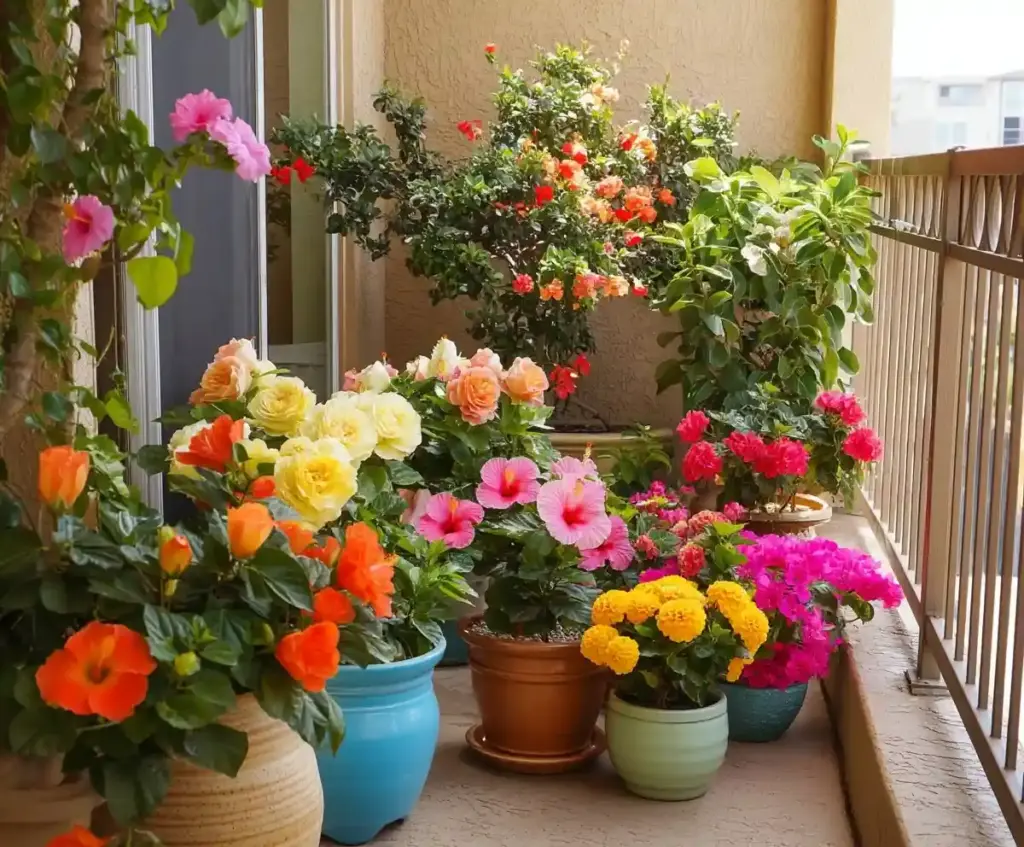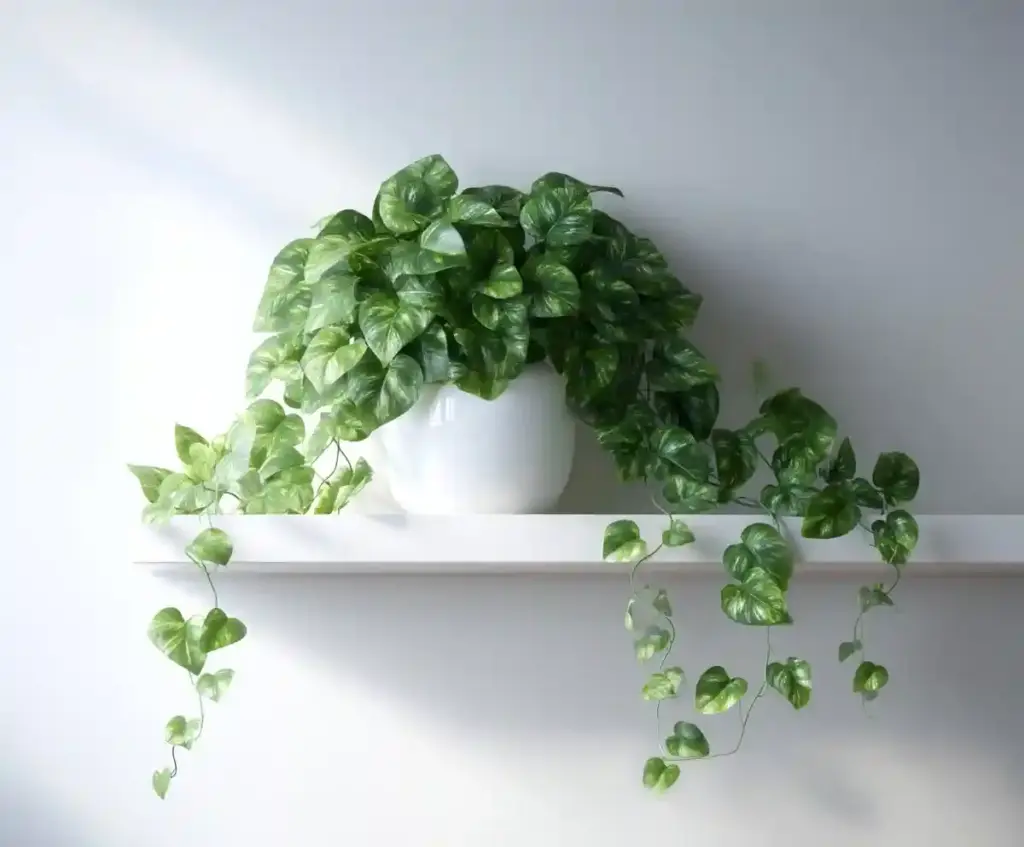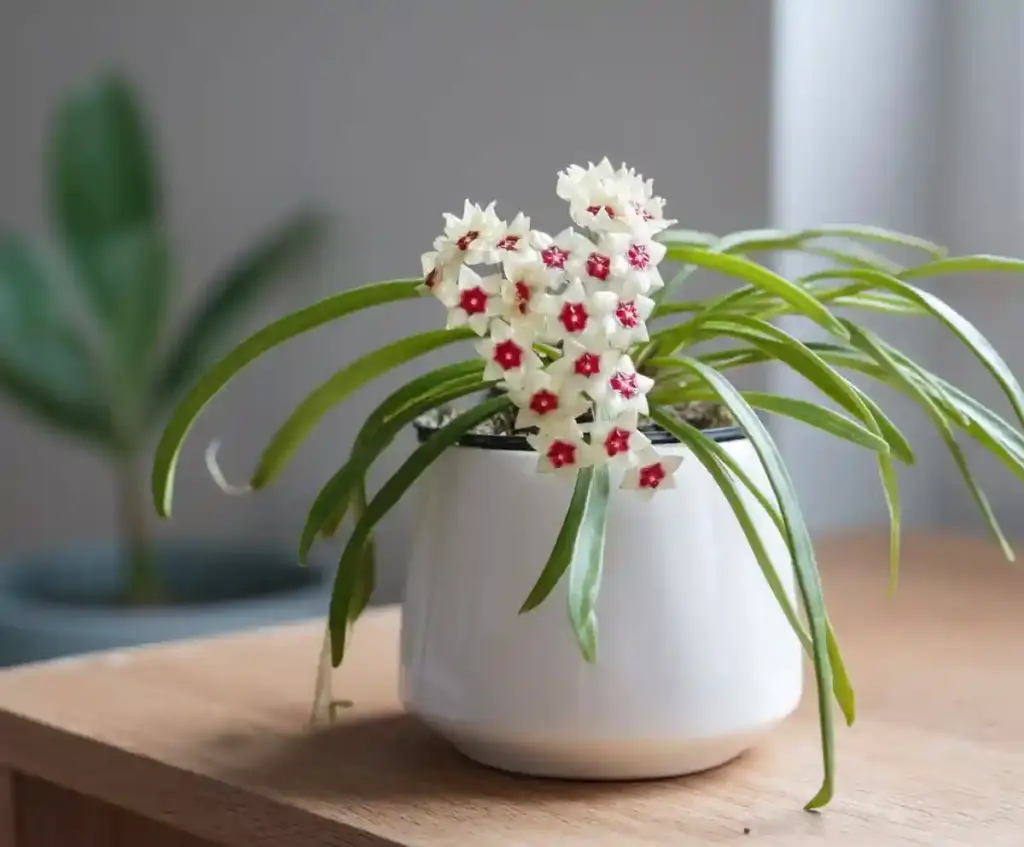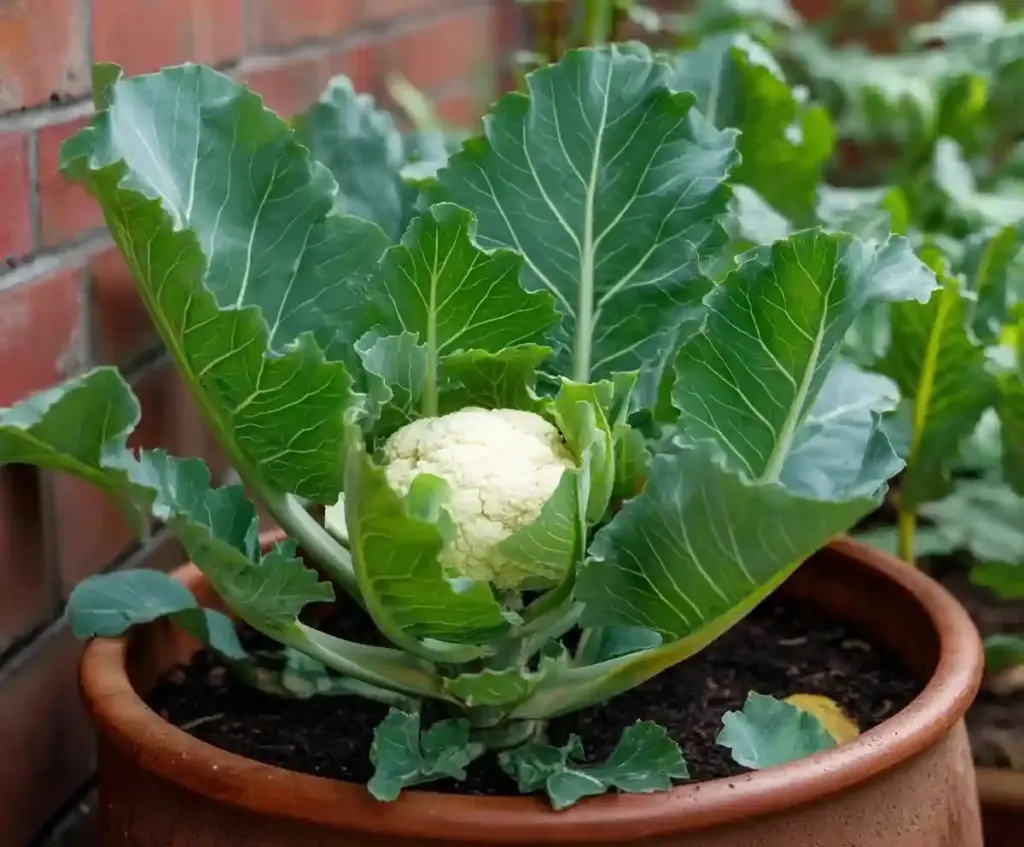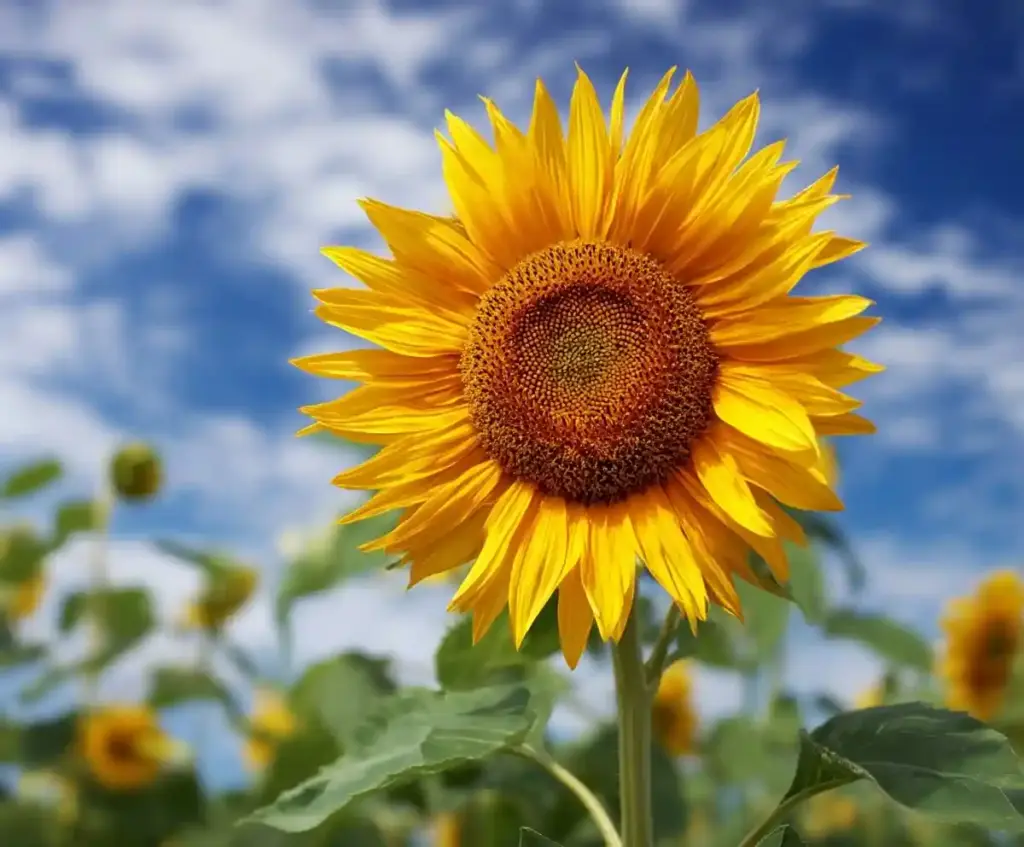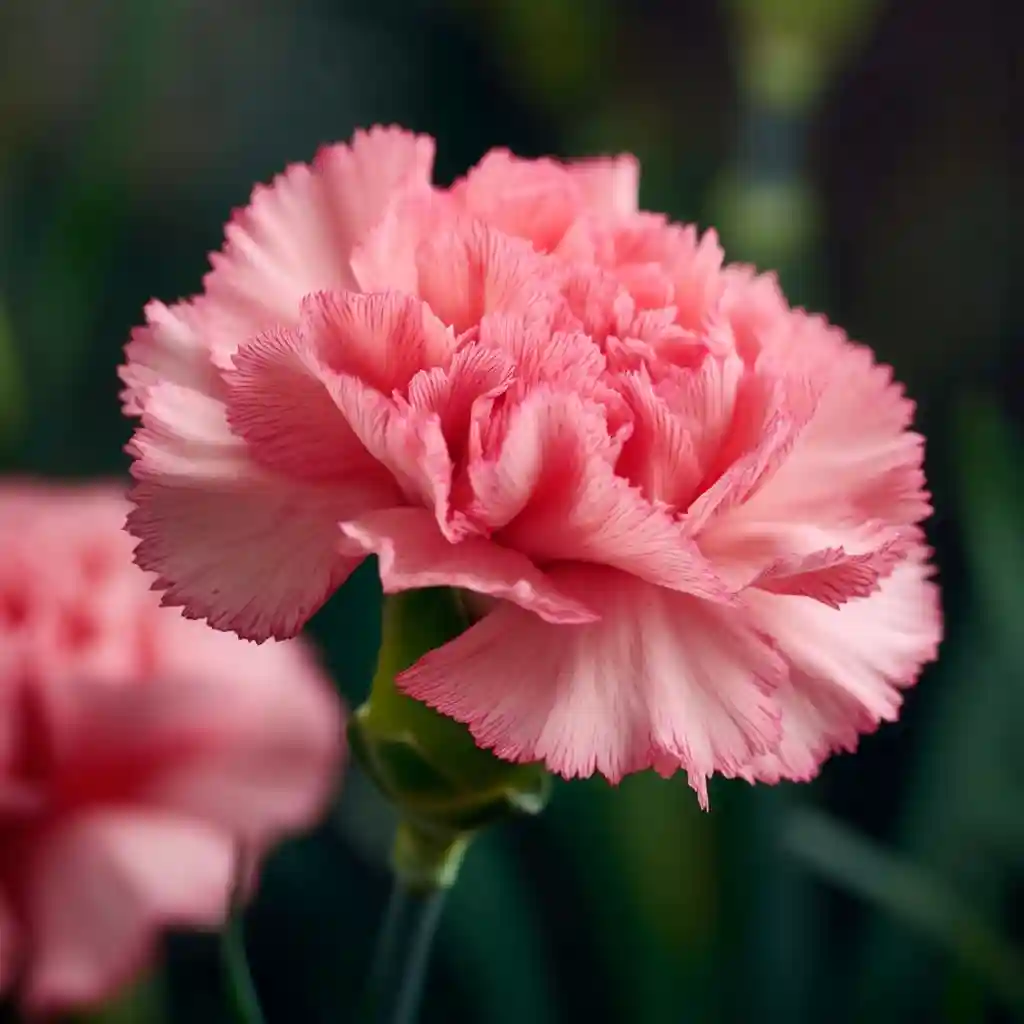Birth flowers have long held a special place in traditions, celebrations, and symbolism. Just as each month is tied to a zodiac sign and birthstone, it also carries a floral representative that reflects personality, emotion, and seasonal change. From the bold carnation of January to the festive poinsettia of December, these blooms offer a meaningful way to connect with nature and personal identity throughout the year.
This guide breaks down the meaning of birth flowers by month, offering insight into their origins, characteristics, and the stories they tell. Whether you’re giving flowers as a gift or simply curious about the flower tied to your birth, you’ll find each month’s selection filled with color, culture, and timeless symbolism.
Table of Contents
🌸 January Birth Flower
🌺 Carnation
The carnation is one of the most iconic and widely cultivated flowers, symbolizing love, admiration, and distinction. Its botanical name, Dianthus caryophyllus, translates to “flower of the gods”—a fitting title for the birth flower of January.
Native to Europe and Asia, carnations are known for their ruffled petals and clove-like scent. Their meanings vary by color:
- Red signifies deep admiration
- White represents pure love and remembrance
- Pink symbolizes a mother’s undying love
According to Christian legend, pink carnations bloomed where the Virgin Mary’s tears fell as she watched Jesus carry the cross. This powerful association makes them a popular choice for Mother’s Day and heartfelt expressions of care.
Gardeners love carnations for their long-lasting blooms and versatility, thriving both in beds and as cut flowers in arrangements. With hybrids developed for continuous flowering, they bring beauty and meaning throughout the year—starting with the cold days of January.
❄️ Snowdrop
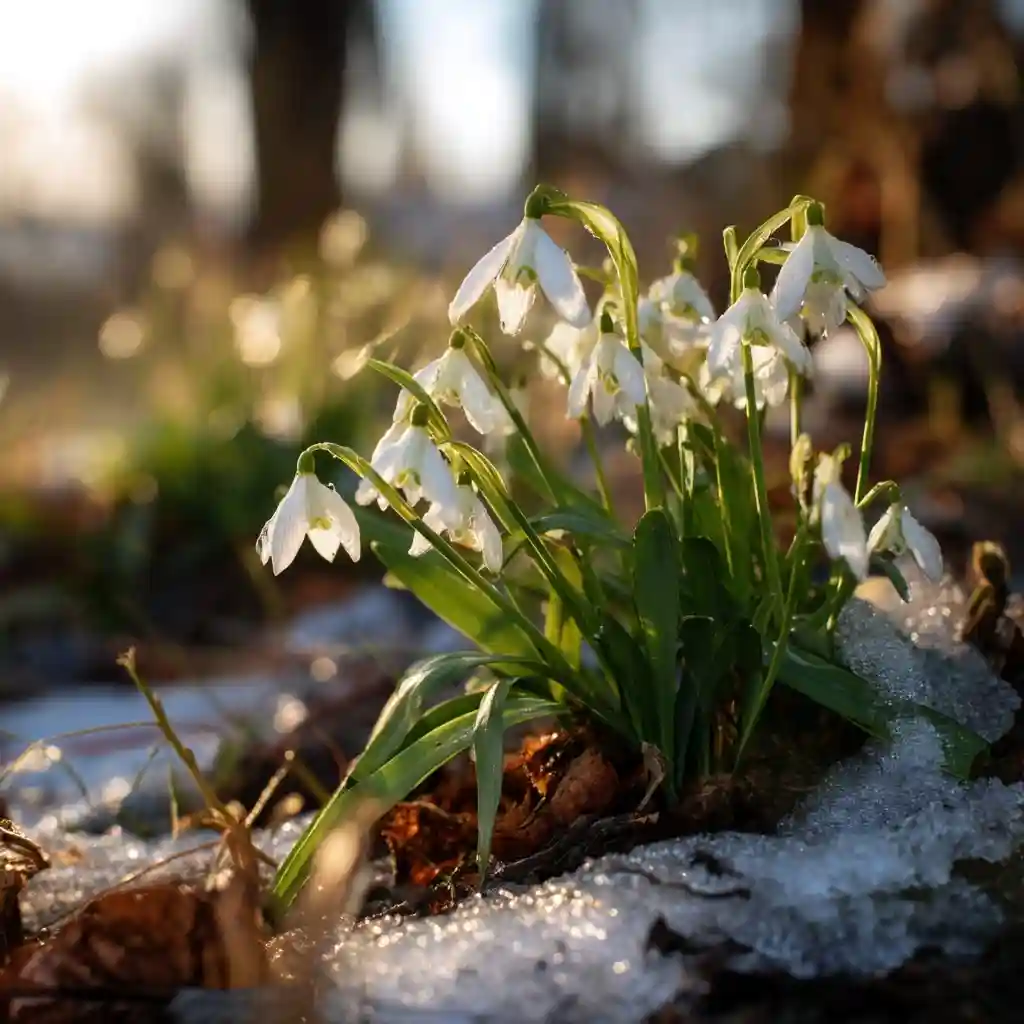
Delicate yet resilient, snowdrops (Galanthus nivalis) emerge in late winter, often pushing through snow to signal hope and renewal. As January’s second birth flower, the snowdrop is revered for its quiet strength and understated beauty.
These bulbous perennials bloom in clusters of drooping white petals and are among the first signs of life after winter’s frost. The name Galanthus means “milk flower,” referring to their color and gentle form.
Symbolically, snowdrops represent:
- Hope in dark times
- Courage in adversity
- New beginnings and happiness
A popular tale suggests snowdrops first appeared when an angel comforted Adam and Eve after their exile from Eden, transforming snowflakes into blooms. Today, their appearance in January gardens is a cherished reminder that brighter days are ahead.
💜 February Birth Flower
🌸 Violet
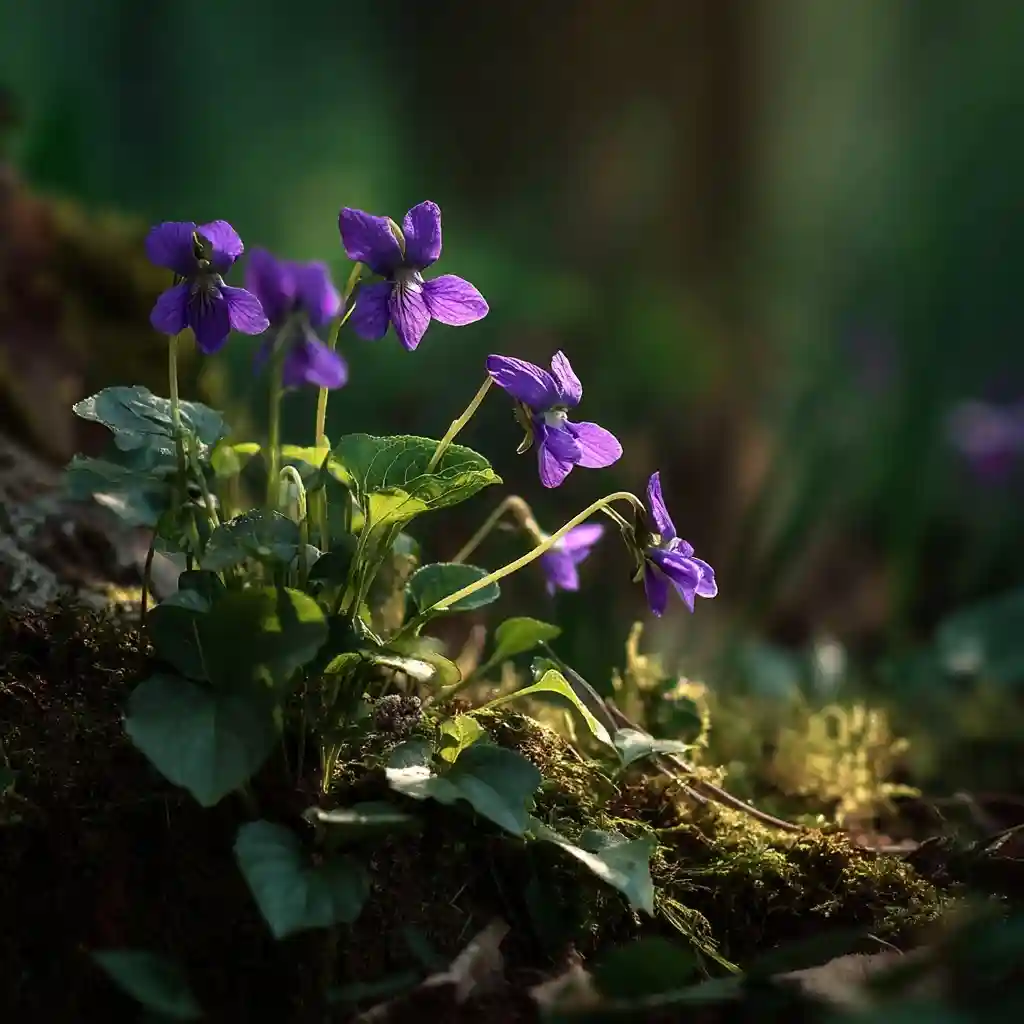
Symbolic of loyalty, modesty, and everlasting love, the violet (Viola odorata) is February’s traditional birth flower. Despite the red rose dominating Valentine’s Day, violets have a romantic legacy of their own.
Legend says St. Valentine used violet ink to pen love notes while imprisoned, linking the flower to heartfelt devotion. Native to Europe and parts of Asia, violets thrive in cool climates and are often found blooming in late winter.
There are two main types of violets:
- Pansies (Viola cornuta), often perennial in warm climates
- Johnny-jump-ups (Viola tricolor), smaller and more delicate
Color symbolism includes:
- Purple: Faithful love and dignity
- White: Innocence and humility
In Roman times, violets were placed on graves to symbolize remembrance, but in modern floral language, they represent an enduring, sincere affection—making them a poetic match for February birthdays.
🌈 Iris
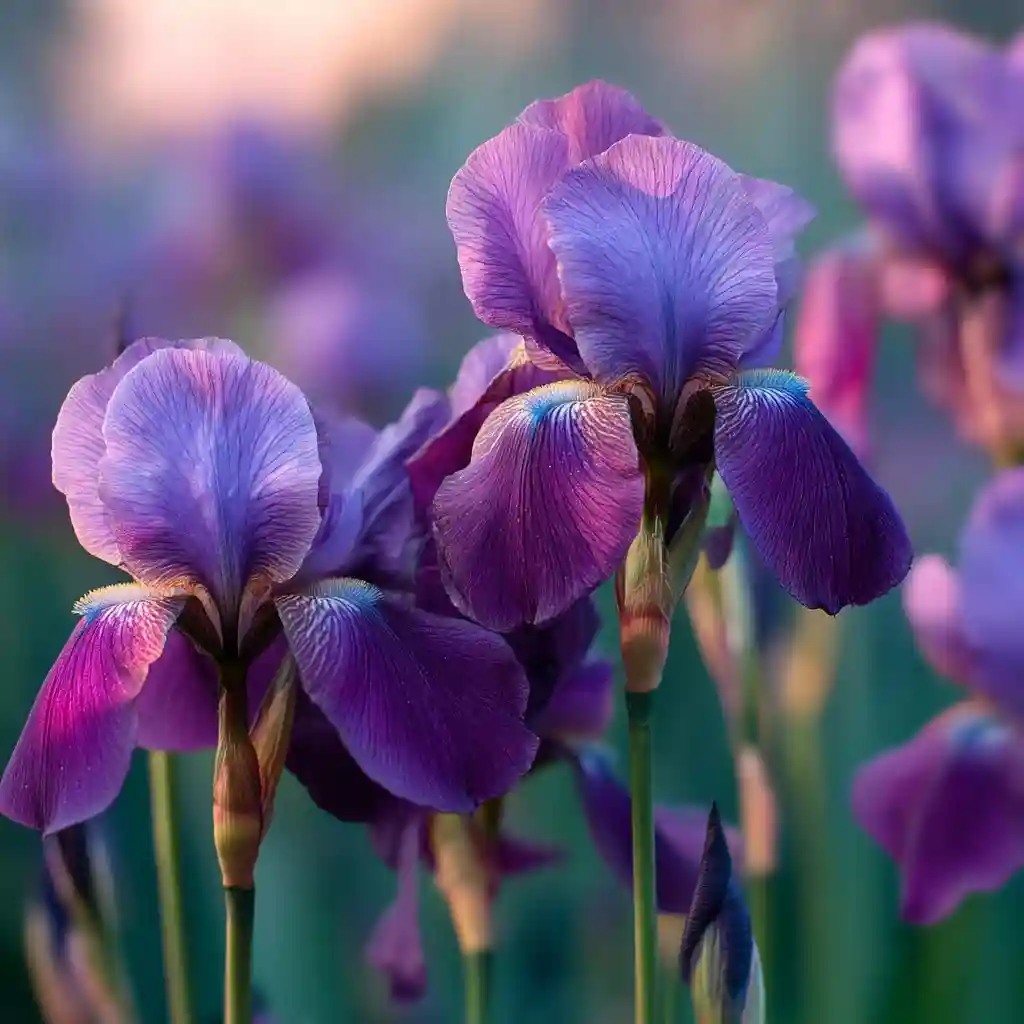
The iris, named after the Greek goddess of the rainbow, is a vibrant and meaningful bloom linked to wisdom, faith, and valor. It’s recognized as a birth flower for February, especially in the English tradition, and comes in a dazzling array of colors.
The iris features three upright petals (“standards”) and three that fall downward (“falls”), a design thought to represent:
- Faith
- Valor
- Wisdom
Common types of irises include:
- Bearded iris (I. germanica): hardy and widely grown
- Beardless iris (I. sibirica): with thinner leaves and no fuzzy texture
- Crested iris (I. cristata): identified by its ridged falls
Across cultures, irises are powerful symbols. In Japan, they ward off evil; in Greece, purple irises were planted on graves to guide souls to the afterlife. Their regal appearance and layered meaning make them a bold, thoughtful representation for February-born individuals.
🌼 Primrose
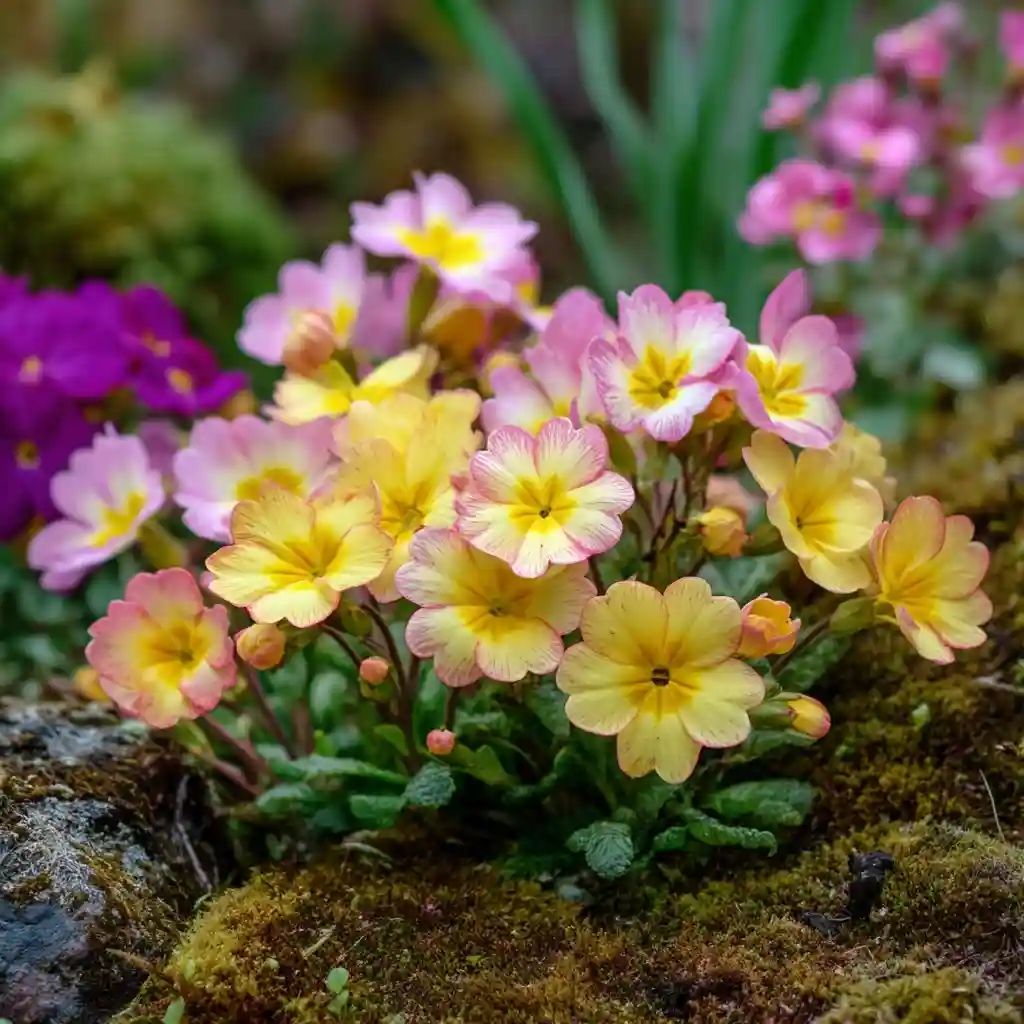
For Americans, the primrose (Primula vulgaris) holds the title of February birth flower. Its name, meaning “first rose,” reflects its early bloom in late winter and early spring—bringing youth, love, and renewal to the season.
Native to Europe, primroses are often grown as bedding or container plants. They’re popular for their charming, five-petaled flowers and soft hues, ranging from white and pink to yellow and purple.
Primrose symbolism includes:
- Young love
- Hope for new beginnings
- Tenderness and devotion
A traditional gift in German folklore, the primrose was believed to open doors to enchanted realms. While you may not find treasure, gifting a primrose today is a sweet, meaningful gesture for someone you cherish.
🌼 March Birth Flower
🌞 Daffodil
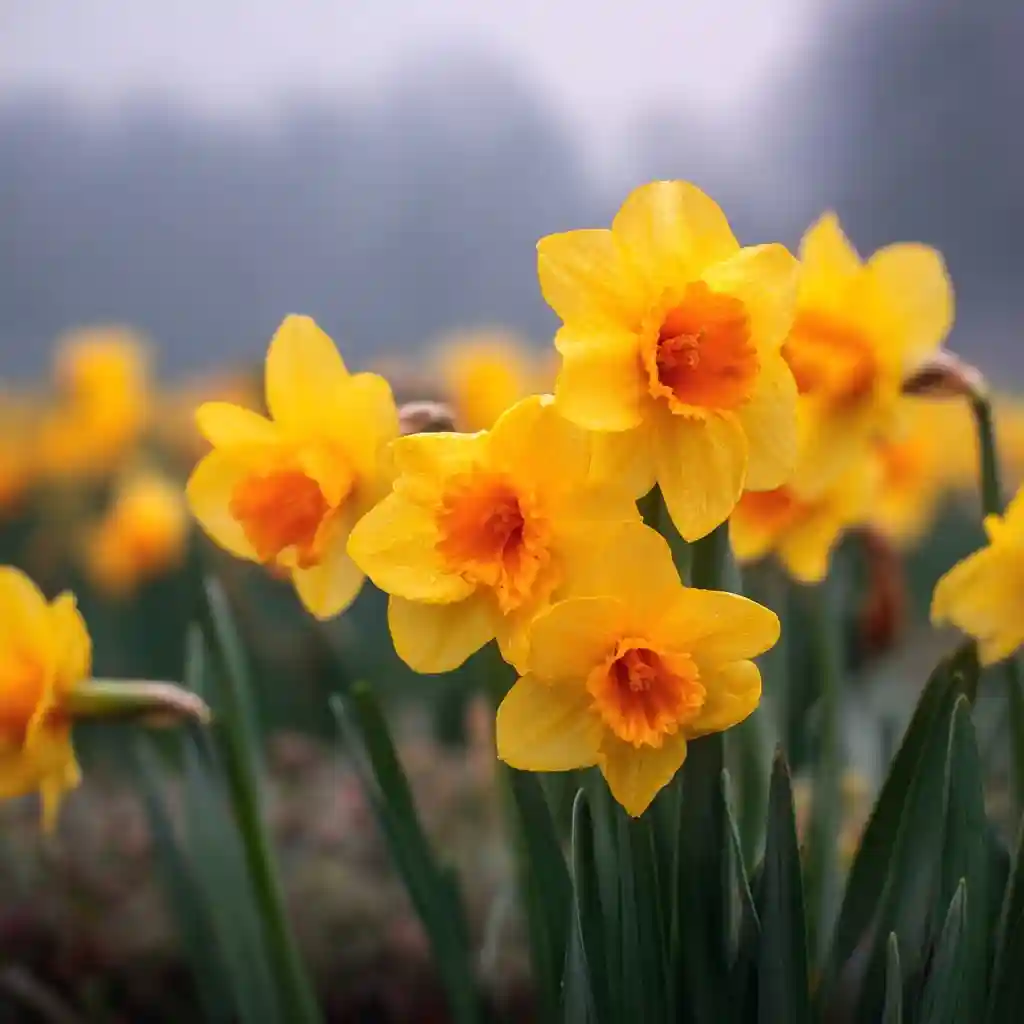
The daffodil, also known by its botanical name Narcissus, is March’s radiant birth flower. These cheerful yellow blooms are a symbol of rebirth, new beginnings, and domestic happiness, perfectly aligned with the arrival of spring.
Rooted in Greek mythology, the name Narcissus comes from the tragic tale of a young man so captivated by his own reflection that he faded away, only for the daffodil to grow in his place. While the story is somber, the flower itself has come to embody resilience and renewal.
Key characteristics of daffodils include:
- Grown from bulbs in the Amaryllidaceae family
- Recognizable trumpet-shaped central corona
- Varieties with white, orange, or double blooms
Different types include:
- Butterfly daffodils: Split, ruffled coronas
- Double daffodils: Layered petals for added volume
While daffodils brighten up flower beds and homes in early spring, they also carry a warning: all parts of the plant are toxic if ingested. Still, their vibrant display and seasonal timing make them a beloved emblem of optimism and growth.
For those born in March, the daffodil brings a message of hope and joyful transformation—a beautiful start to a new cycle of life.
🌷 April Birth Flower
🌼 Daisy
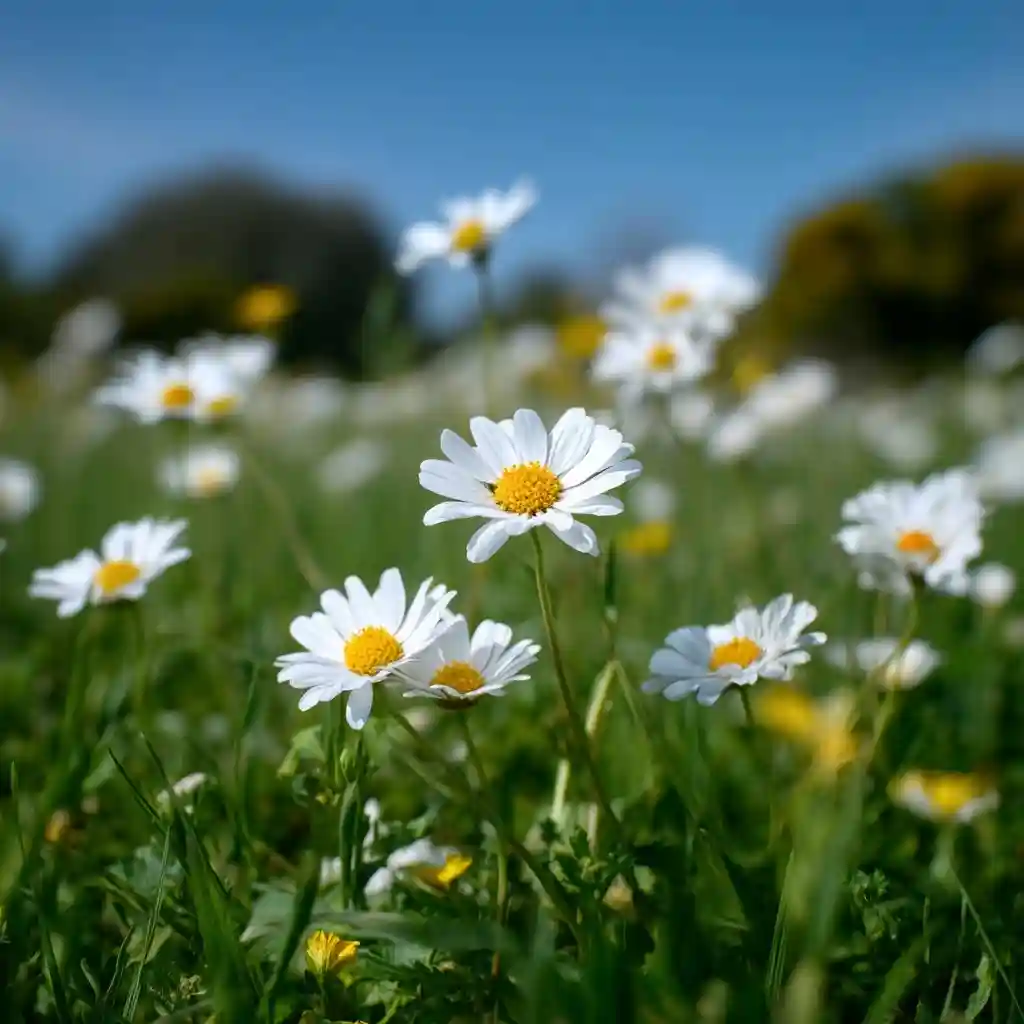
The cheerful daisy (Bellis perennis) is April’s birth flower in English tradition, symbolizing purity, innocence, and loyal love. Its name comes from “day’s eye,” referring to the way it opens with the morning sun and closes at night.
Native to Europe and Western Asia, daisies are part of the vast Asteraceae family and come in several beloved varieties:
- Shasta Daisy: Larger blooms, ideal for borders
- Gerbera Daisy: Bold colors, often used in bouquets
- Painted Daisy: Vibrant reds and purples that attract pollinators
Historically, the daisy was used to treat battlefield wounds and was even seen as a good luck charm for children. In flower folklore, pulling daisy petals while saying, “He loves me, he loves me not” is an innocent game rooted in themes of love and truth.
April-born individuals connected to the daisy are thought to embody sincerity, optimism, and warmth—qualities that brighten any garden, just like the flower itself.
🌸 Sweet Pea

The sweet pea (Lathyrus odoratus), fragrant and delicate, is another bloom associated with April, especially in American traditions. This climbing plant is celebrated for its pleasant scent, graceful petals, and symbolism of blissful pleasure and goodbyes.
Originally from Sicily, the sweet pea became a popular ornamental flower in the 19th century thanks to the work of horticulturists like Henry Eckford. Its common name reflects its soft perfume and its strong association with heartfelt emotion.
Notable features include:
- A butterfly-like flower shape
- Varieties in shades of pink, purple, white, and blue
- Climbing habit that makes it ideal for trellises and fences
Sweet peas are traditionally gifted to express appreciation or to bid a fond farewell. Their presence in the garden is short-lived but deeply enchanting—much like the precious moments they represent.
For those born in April, sweet peas signify graceful beauty and emotional depth, making them a fragrant tribute to sensitivity and connection.
🌸 May Birth Flower
🌿 Lily of the Valley
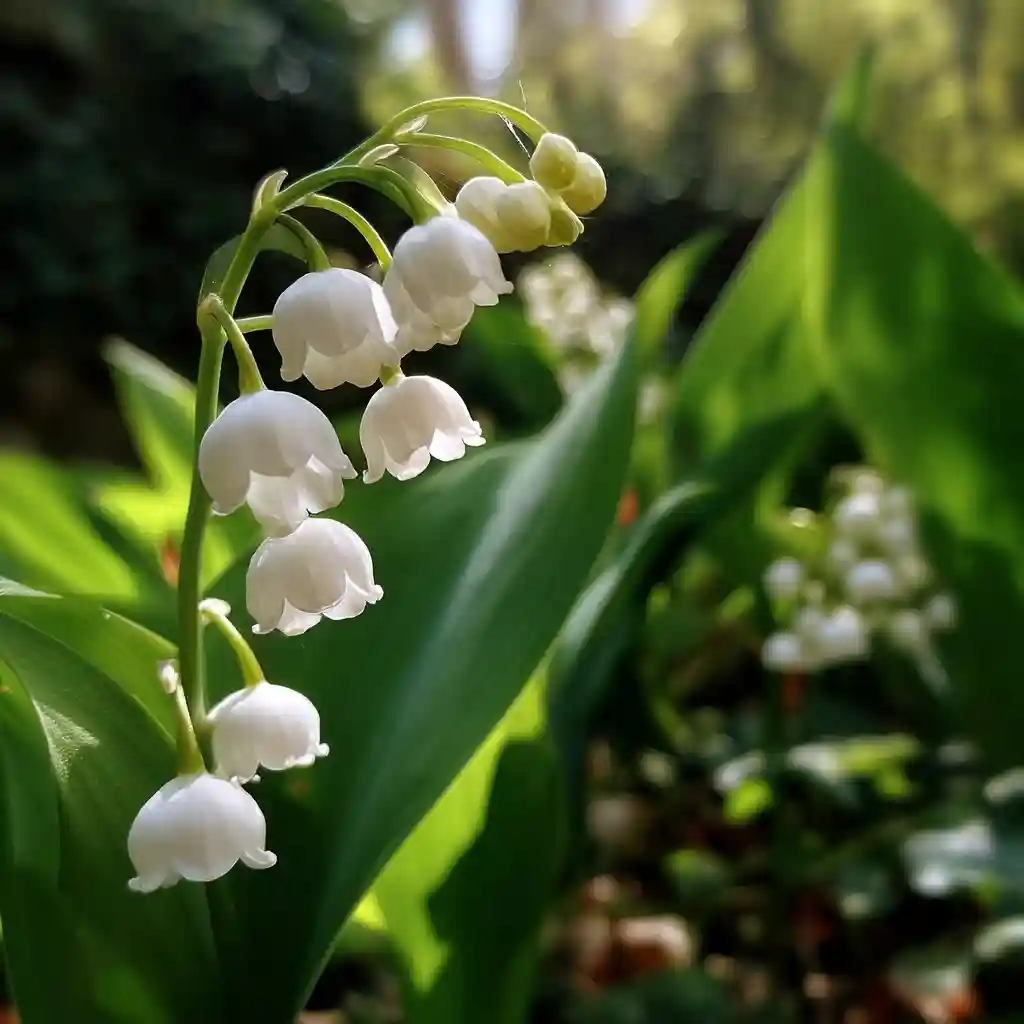
With its dainty, bell-shaped blooms and sweet fragrance, Lily of the Valley (Convallaria majalis) is one of the most beloved birth flowers of May. Symbolizing purity, humility, and the return of happiness, it is especially fitting for a month that celebrates rebirth and renewal in full bloom.
Despite its delicate appearance, this plant is highly resilient. It thrives in shaded areas and spreads through underground rhizomes, forming lush, fragrant carpets in woodlands and gardens alike.
Interesting facts:
- Not a true lily (it belongs to the Asparagus family)
- Extremely toxic if ingested
- Celebrated in France on May 1st (La Fête du Muguet) as a token of good luck
In mythology, the flower is associated with the goddess Maia, whose name is also the root of the month “May.” Christian lore also links it to the Virgin Mary, calling it “Our Lady’s Tears.”
With its symbolism of hope, love, and fresh beginnings, Lily of the Valley makes a meaningful gift for anyone born in this lush, blossoming month.
🌳 Hawthorn
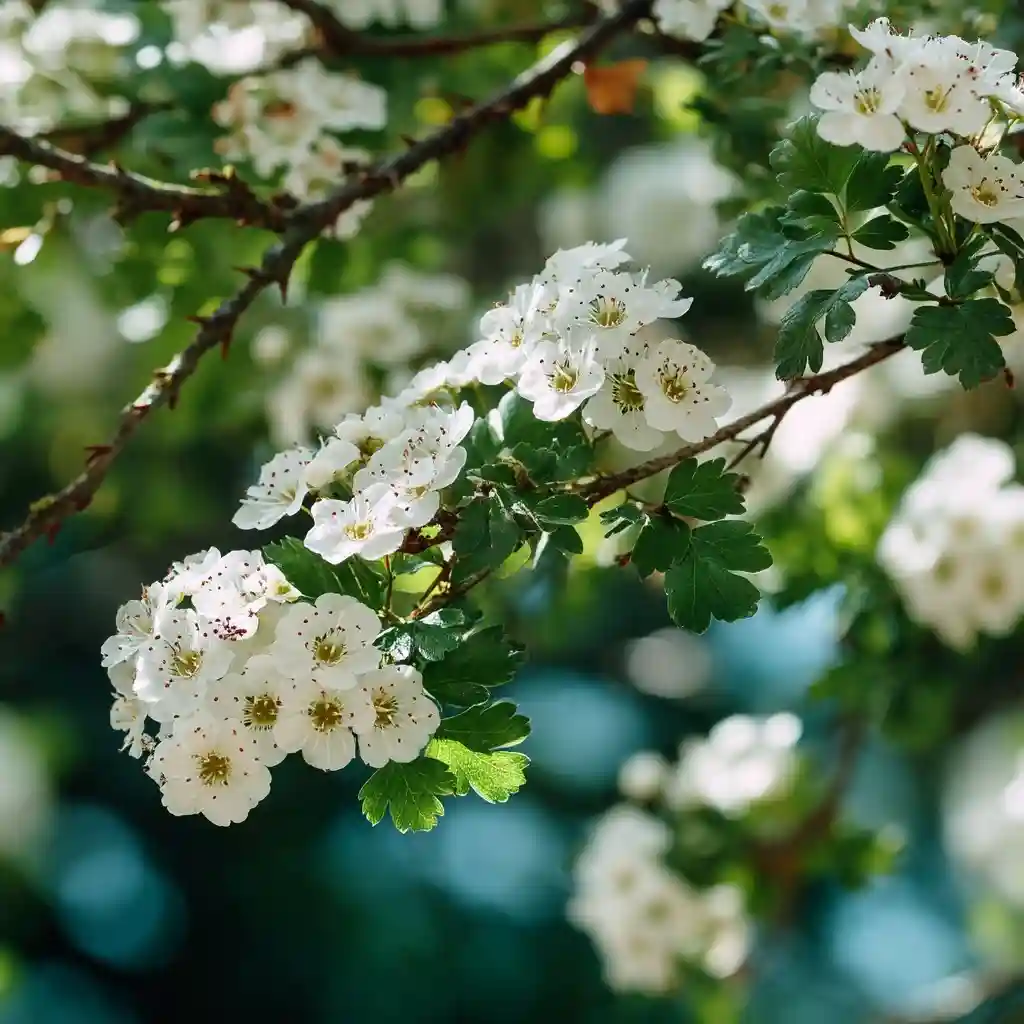
The hawthorn (Crataegus monogyna) is the lesser-known but equally powerful May birth flower, especially in American tradition. This thorny shrub, which produces clusters of tiny white or pink flowers, symbolizes hope, protection, and longevity.
Part of the rose family, hawthorn has been cultivated not only for ornamental purposes but also for medicinal and culinary uses:
- Berries (haw) used in teas and jams
- Leaves used traditionally for digestive issues
- Common in natural hedging and wildlife habitats
Old British folklore considered it bad luck to bring hawthorn indoors, believing its scent foretold death. Later, scientists discovered that its flowers produce trimethylamine, also found in decaying tissue—explaining the superstition.
Despite these associations, the hawthorn is widely viewed as a plant of strength and endurance. It can live for hundreds of years, providing shelter and sustenance to wildlife while adding seasonal beauty to gardens.
For May-born individuals, the hawthorn represents resilience, happiness, and a love that lasts—rooted in both legend and landscape.
🌹 June Birth Flower
🌺 Rose
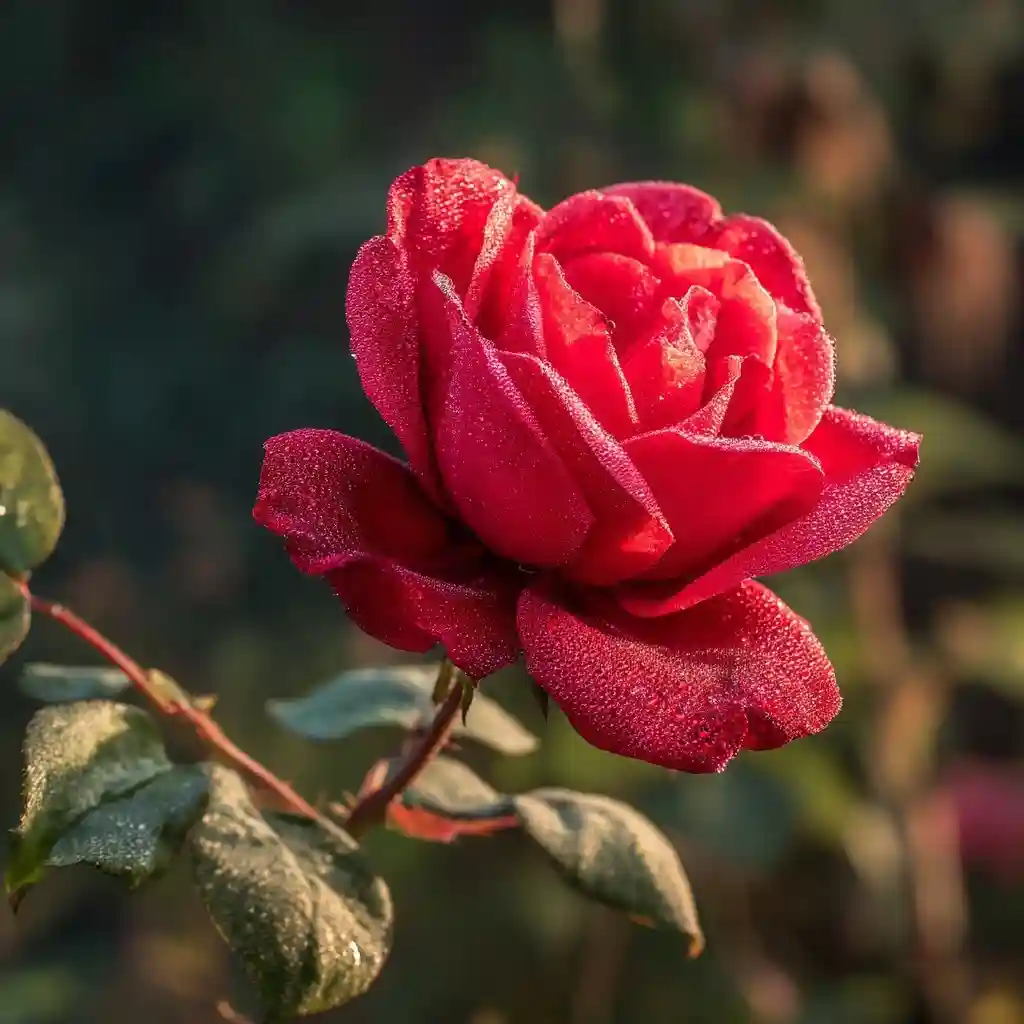
Few flowers are as universally adored as the rose, the primary birth flower for June. Associated with love, passion, and beauty, the rose is one of the oldest cultivated flowers, with origins tracing back thousands of years to Central Asia.
Belonging to the Rosaceae family, roses come in many types:
- Heirloom Roses: Fragrant, old-world varieties like Bourbons and Albas
- Modern Roses: Including Hybrid Teas and Floribundas, bred for vibrant color and repeat blooming
- Climbing and Shrub Roses: Versatile in landscapes and garden designs
Each color carries its own meaning:
- Red: Deep love and romance
- White: Innocence and reverence
- Pink: Admiration and joy
- Yellow: Friendship and happiness
In English history, the Tudor Rose symbolized the unification of rival houses, making the rose not just a floral icon but a national emblem. Shakespeare even wrote, “Of all flowers, methinks a rose is best.”
For June birthdays, the rose reflects a deep emotional core, passion for life, and timeless elegance.
🌼 Honeysuckle
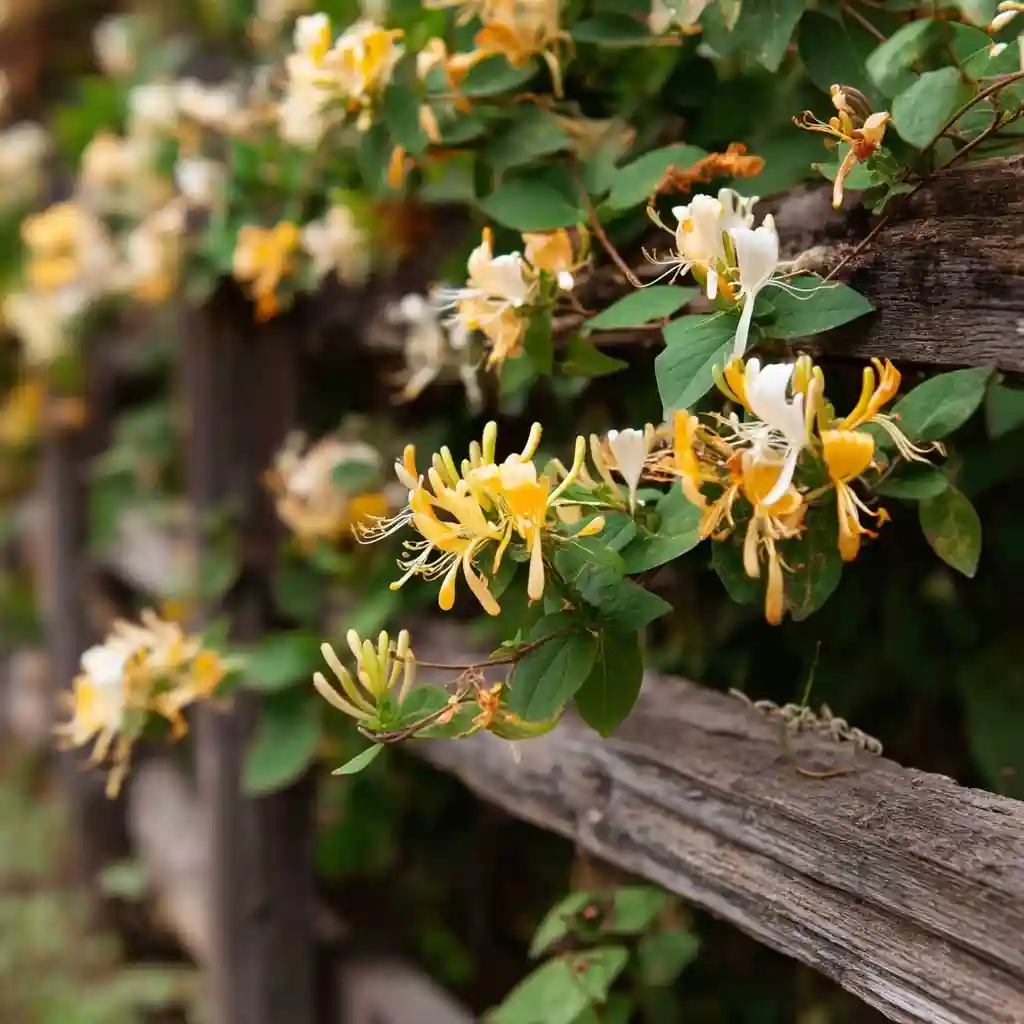
In English tradition, honeysuckle (Lonicera periclymenum) is also a birth flower for June—and it brings with it the meanings of everlasting love, sweetness, and strong bonds.
Honeysuckles are fast-growing shrubs or vines, known for their:
- Twisting stems and tubular, fragrant flowers
- Shades ranging from white and yellow to red and pink
- Ability to attract pollinators like hummingbirds and bees
The name is said to come from children’s habit of sucking nectar from the blossoms. In folklore, honeysuckle vines were planted near entrances to ward off evil and bring luck in love.
Though beautiful, honeysuckle vines can become invasive if unchecked. With careful cultivation, however, they make excellent additions to trellises, fences, or garden arches.
For those born in June, honeysuckle represents devotion, sweet affection, and romantic energy—a perfect floral emblem for the heart of summer.
🌊 July Birth Flower
🌸 Water Lily
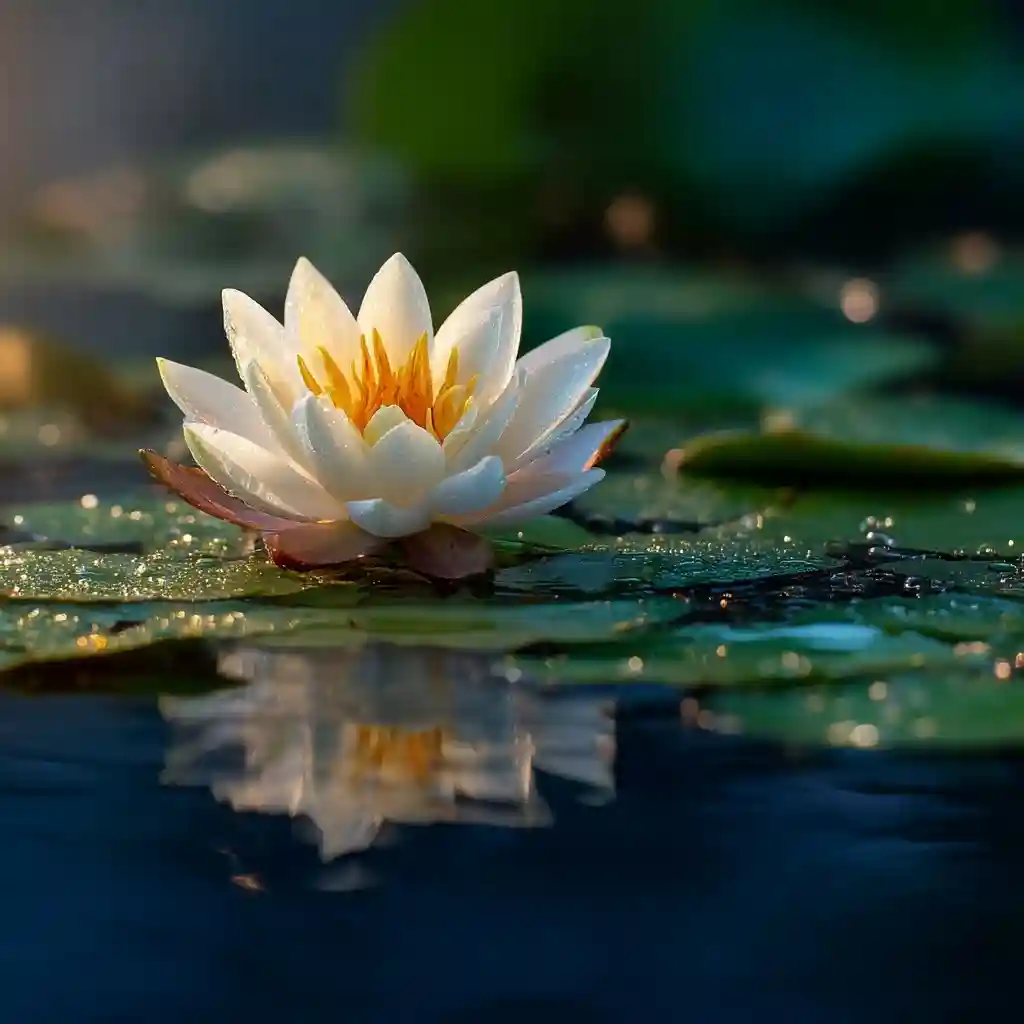
The water lily (Nymphaea spp.) is a stunning aquatic plant and the American birth flower for July, symbolizing purity, enlightenment, and rebirth. With floating leaves and vibrant blooms that rise above calm waters, the water lily offers a serene and spiritual connection to nature.
These plants have adapted beautifully to their environment:
- Broad leaves provide shade to suppress algae
- Roots anchor in the pond bottom while blooms float on the surface
- Blooms open in the morning and close at night, mirroring cycles of renewal
In Hindu and Buddhist cultures, the water lily (often interchanged with the lotus) represents spiritual awakening, as it blooms from muddy depths into the light. Chinese tradition links it to a happy, long-lasting marriage, making it popular in weddings.
Common varieties:
- Nymphaea odorata (fragrant water lily)
- Nymphaea mexicana (yellow)
- Nymphaea ‘Attraction’ (vivid red blooms)
For July birthdays, the water lily is a powerful symbol of inner peace, emotional clarity, and rising through life’s challenges with grace.
🌿 Larkspur

Representing positivity, first love, and lightheartedness, the larkspur (Delphinium spp.) is the traditional English birth flower for July. With tall spikes of blossoms in shades of purple, blue, pink, and white, larkspurs bring height and color to summer gardens.
Their name comes from the flower’s resemblance to a lark’s claw, while the botanical name Delphinium refers to a dolphin-like bud shape. There are two popular types:
- Belladonna: Shorter, more delicate blooms
- Elatum: Tall, robust stalks often used in floral arrangements
Folklore associates larkspur with warding off evil, and the flowers were once hung over doors to protect homes. Color meanings include:
- White: Cheerfulness and innocence
- Blue/Purple: Dignity, grace, and first love
Because of their short blooming window, larkspurs are often seen as a metaphor for fleeting beauty and heartfelt joy. For July-born individuals, the flower evokes open-heartedness, vibrant expression, and romantic optimism.
🌻 August Birth Flower
🌾 Gladiolus
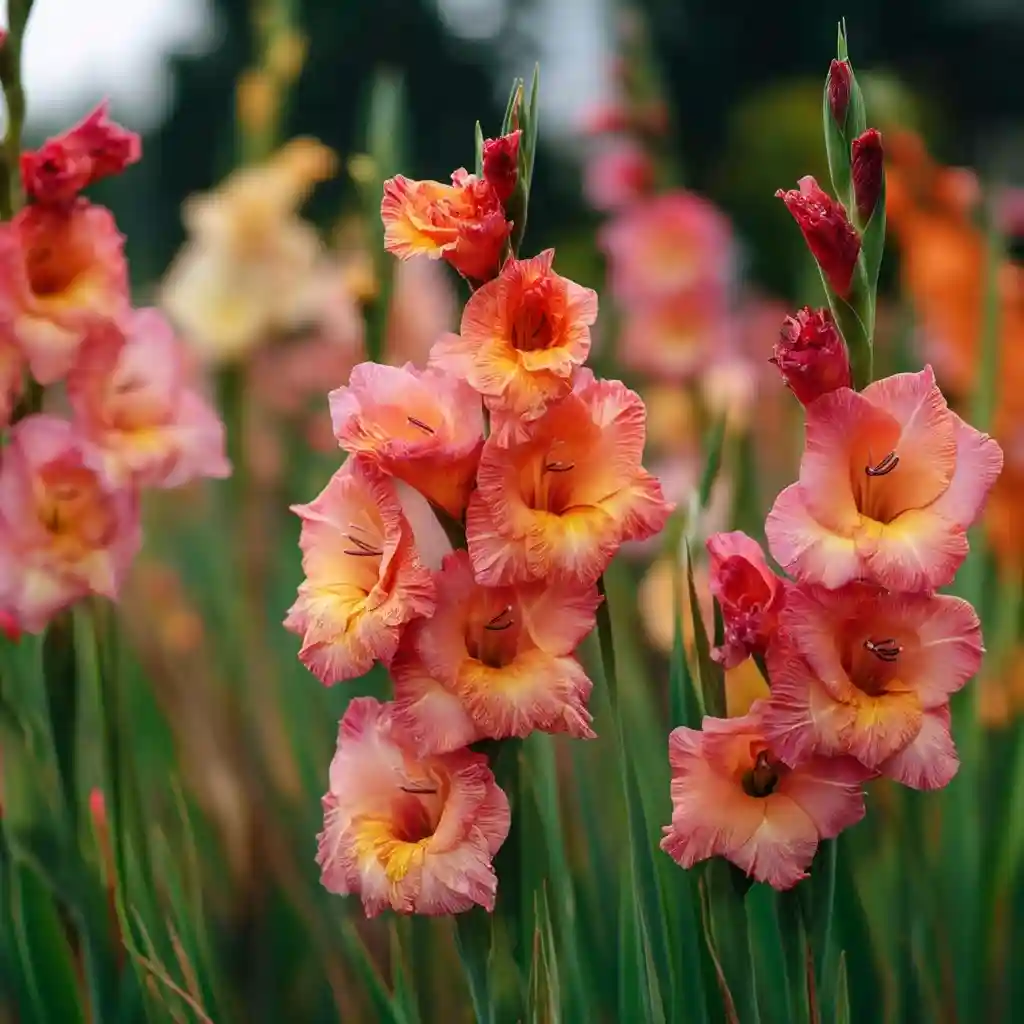
The striking gladiolus is the birth flower for August, symbolizing strength, integrity, and infatuation. Its name comes from the Latin word gladius, meaning “sword,” which refers to its tall, pointed leaves. This sword-like appearance has also earned it the nickname “sword lily.”
Native to tropical and southern Africa, gladiolus flowers grow on vertical spikes and bloom in a wide range of bold colors—perfect for adding drama to garden borders and floral arrangements.
Popular gladiolus varieties include:
- ‘Yellowstone’: Bright yellow blooms
- ‘Claudia’: Crimson with yellow centers
- ‘Alaska’: Elegant, all-white florets
In ancient times, victorious Roman gladiators were showered with gladiolus petals—a tradition that led to its association with honor and triumph. In the language of flowers, giving a gladiolus can mean, “You’ve pierced my heart,” hinting at passionate admiration.
Those born in August share the gladiolus flower’s symbolism of determination, charm, and sincerity, standing tall in both love and life.
🌺 Poppy
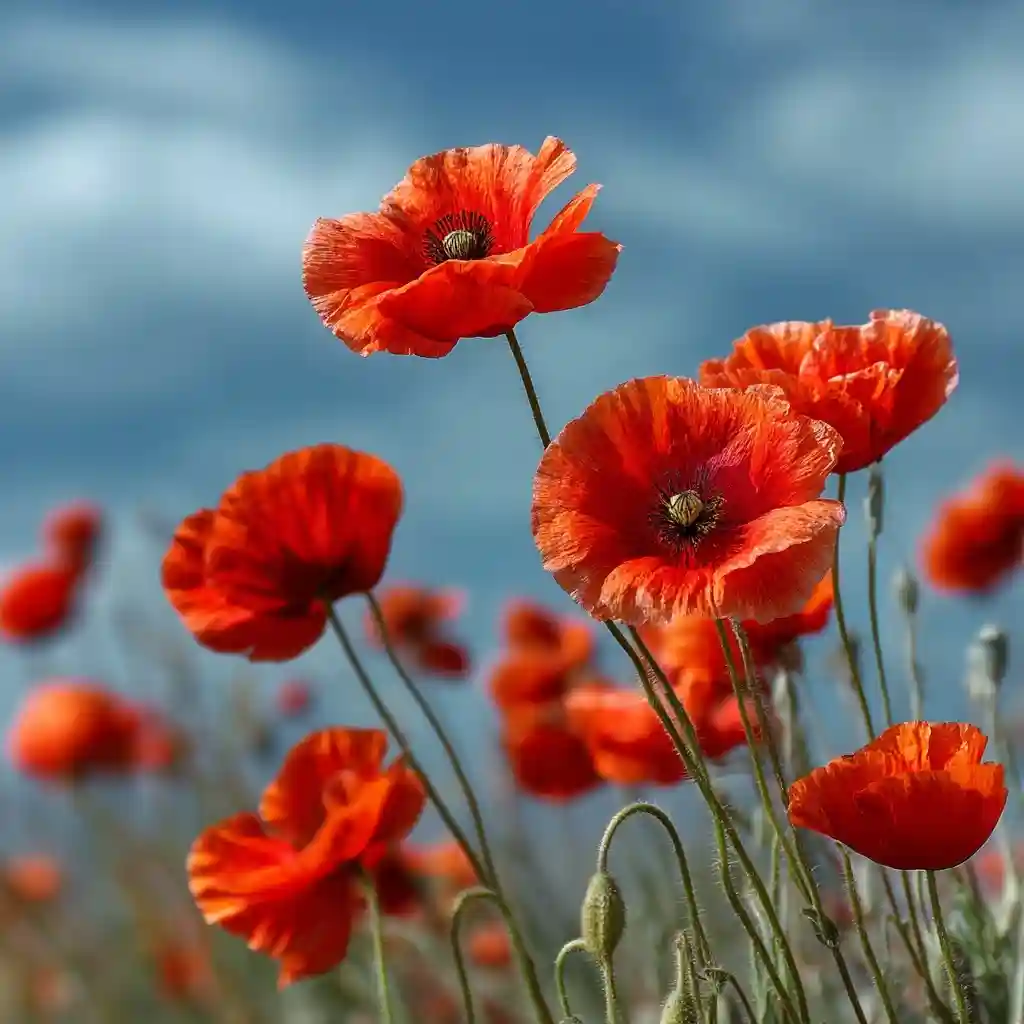
The poppy, another August birth flower (particularly in English tradition), is a bloom rich in emotion, symbolism, and historical weight. Most often seen in brilliant red, the poppy stands for remembrance, peace, consolation, and imagination.
Poppies (Papaver spp.) are native to Europe and Asia and are known for their tissue-paper-like petals and striking black centers. Two of the most well-known species are:
- Papaver rhoeas (common poppy): Associated with WWI remembrance
- Papaver somniferum (opium poppy): Historically used in medicine and ritual
During World War I, poppy seeds dormant in the soil for decades suddenly sprouted across battlefields, giving rise to their lasting symbolism in honoring the fallen. Yet beyond sorrow, poppies also celebrate beauty and hope in resilience.
In folklore, poppy petals were placed in children’s hands to predict true love—if the petal “popped,” love was real.
For August-born individuals, poppies represent creativity, peaceful strength, and emotional depth—a powerful reminder of beauty born from adversity.
🌼 September Birth Flower
🌟 Aster
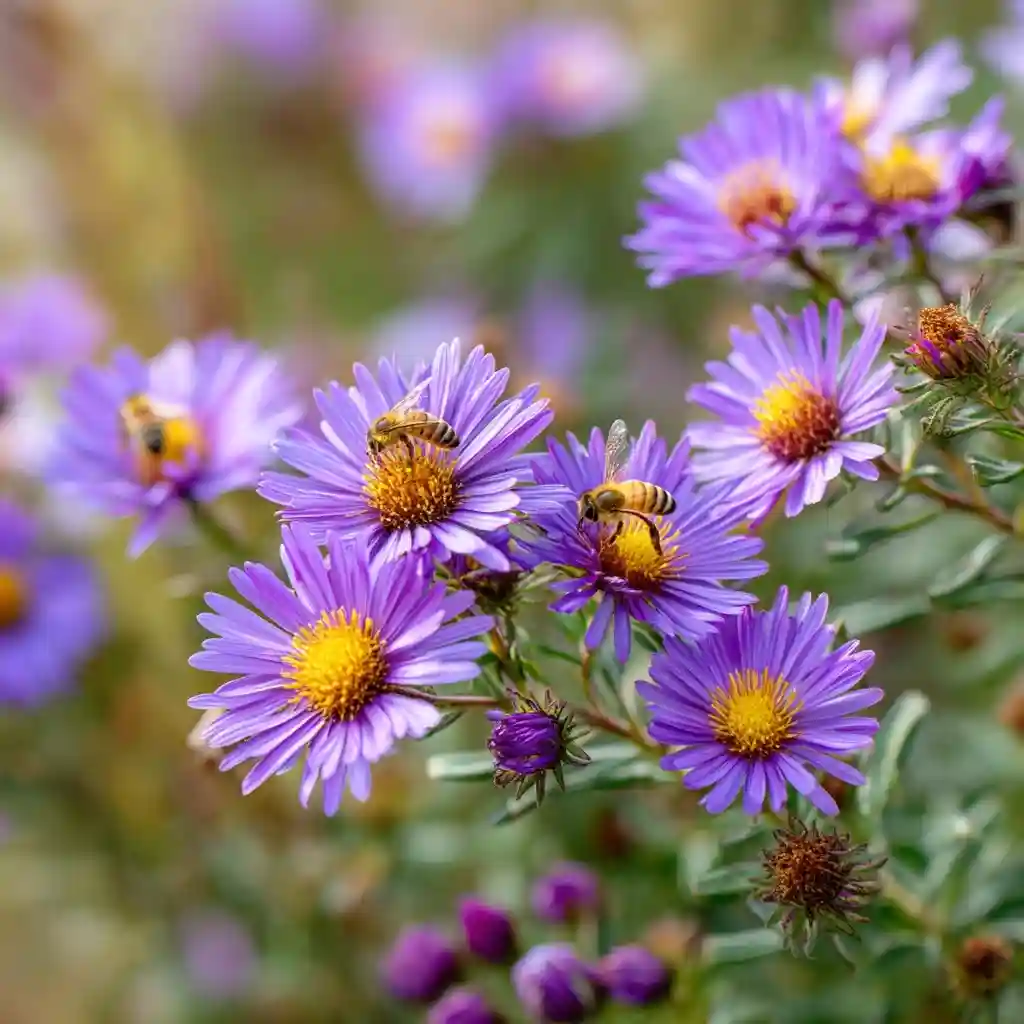
The charming aster is the traditional birth flower for September, known for its daisy-like appearance and starry symbolism—its name comes from the Greek word aster, meaning “star.” Asters represent wisdom, faith, and everlasting love.
These hardy perennials thrive in early autumn and bring vibrant color to gardens just as summer fades. They’re part of the Asteraceae family and are native to North America.
Two main types are most common:
- New England Aster: Tall, bushy, with vibrant purple and pink flowers
- New York Aster: More compact, often with delicate blue-purple hues
Color symbolism of asters includes:
- Purple: Royalty, insight, and mystery
- White: New beginnings and innocence
- Yellow: Optimism and cheer
According to mythology, asters bloomed from the tears of the goddess Asterea as she wept over a starless night sky. Today, asters are associated with romantic love and emotional strength, often used in bouquets to signify devotion.
For September-born individuals, asters symbolize a deep, thoughtful spirit—a blend of inner strength and graceful presence.
🌸 Morning Glory
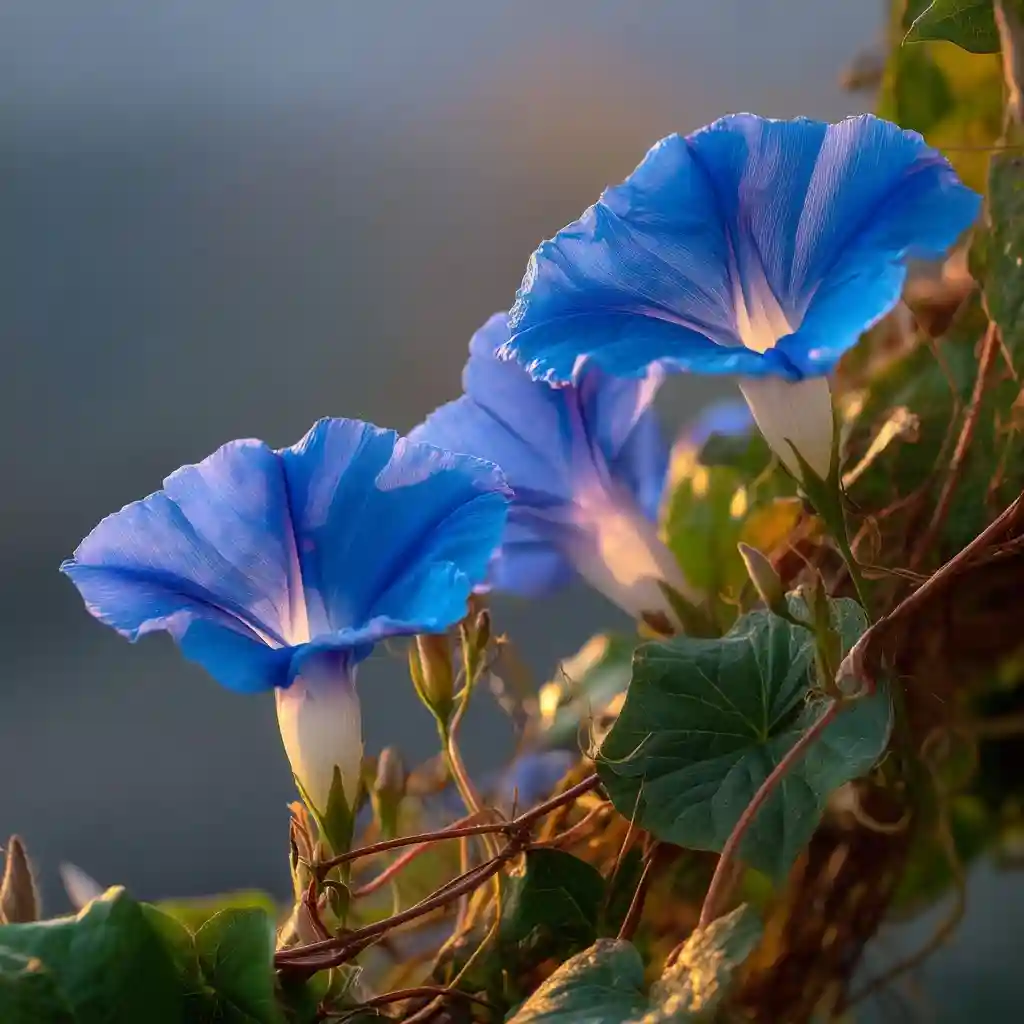
Also associated with September (especially in American tradition), the morning glory is a beautiful climbing flower known for its affection, renewal, and fleeting beauty. Each bloom lasts just a day—opening with the morning sun and fading by evening.
Belonging to the Convolvulaceae family, the most recognized species is Ipomoea purpurea, native to Mexico and Central America. Its funnel-shaped flowers come in stunning hues like:
- Violet
- Blue
- White
- Pink
Morning glories are fast-growing and ideal for fences, arbors, and trellises. Varieties like moonflowers (which bloom at night) and water spinach (an edible relative) highlight the family’s diversity.
In Chinese folklore, morning glories represent a single day of love—a romantic notion tied to the ephemeral nature of the bloom. Despite their brief lifespan, they bloom abundantly, making them a perfect symbol of renewal and unconditional affection.
For those with September birthdays, morning glories reflect a gentle but passionate soul, capable of deep love and quiet strength.
🎃 October Birth Flower
🌼 Marigold
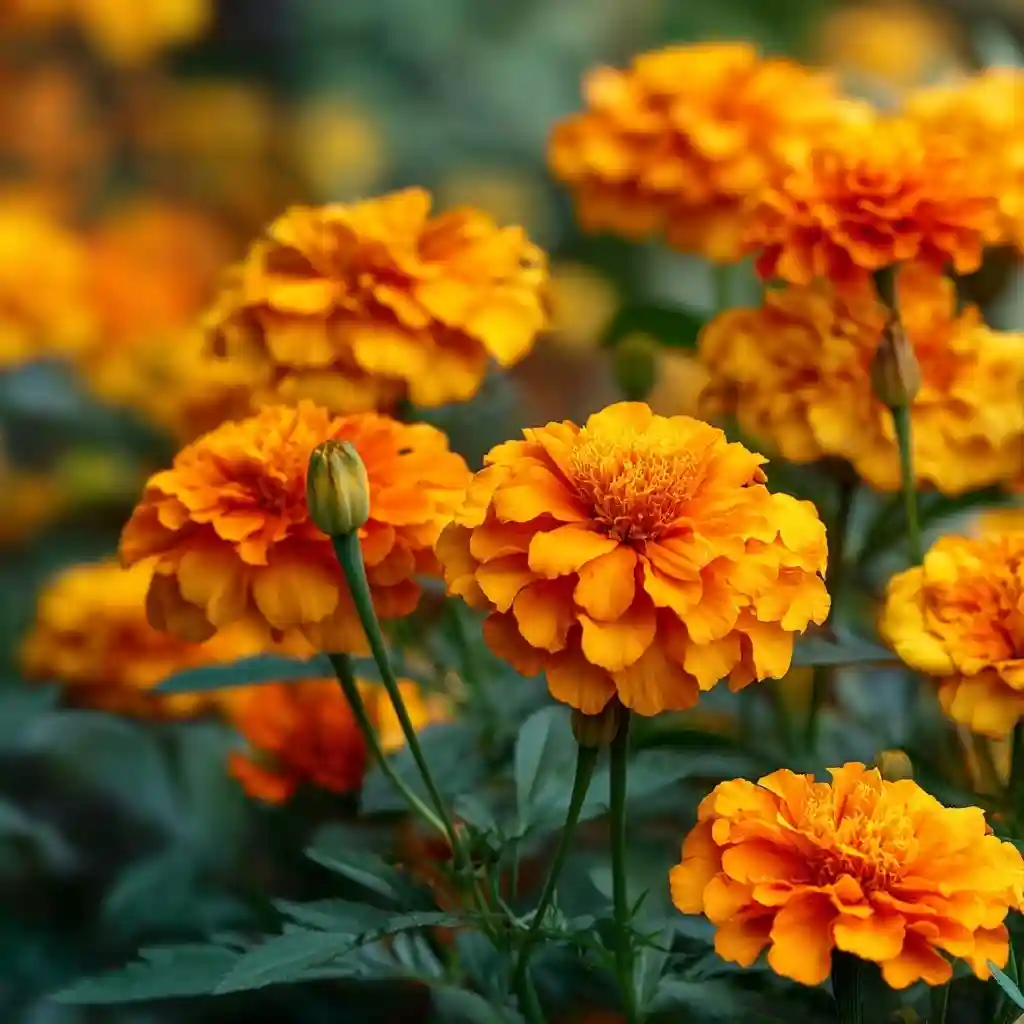
Bright, bold, and bursting with symbolism, the marigold is the primary birth flower for October, representing creativity, passion, and warmth. Its golden blooms light up gardens even as the days grow cooler and shorter.
Marigolds belong to two main genera:
- Tagetes spp.: Includes French and African marigolds, common in gardens and ceremonies
- Calendula officinalis: Also known as “pot marigold,” used in herbal remedies and skincare
Cultural significance runs deep:
- In Aztec tradition, marigolds were sacred, used in rituals and temples
- In Mexico, they are known as flor de muerto (flower of the dead) and feature prominently in Día de los Muertos altars
- In Christian folklore, they were called “Mary’s Gold” and offered in place of coins
Despite associations with death and mourning, marigolds also symbolize hope, inner strength, and the light of remembrance. Their vibrant yellow and orange hues are seen as a reminder of the sun and the power of resilience.
For October-born individuals, the marigold reflects a passionate, expressive nature with a strong sense of loyalty and purpose.
🌸 Cosmos
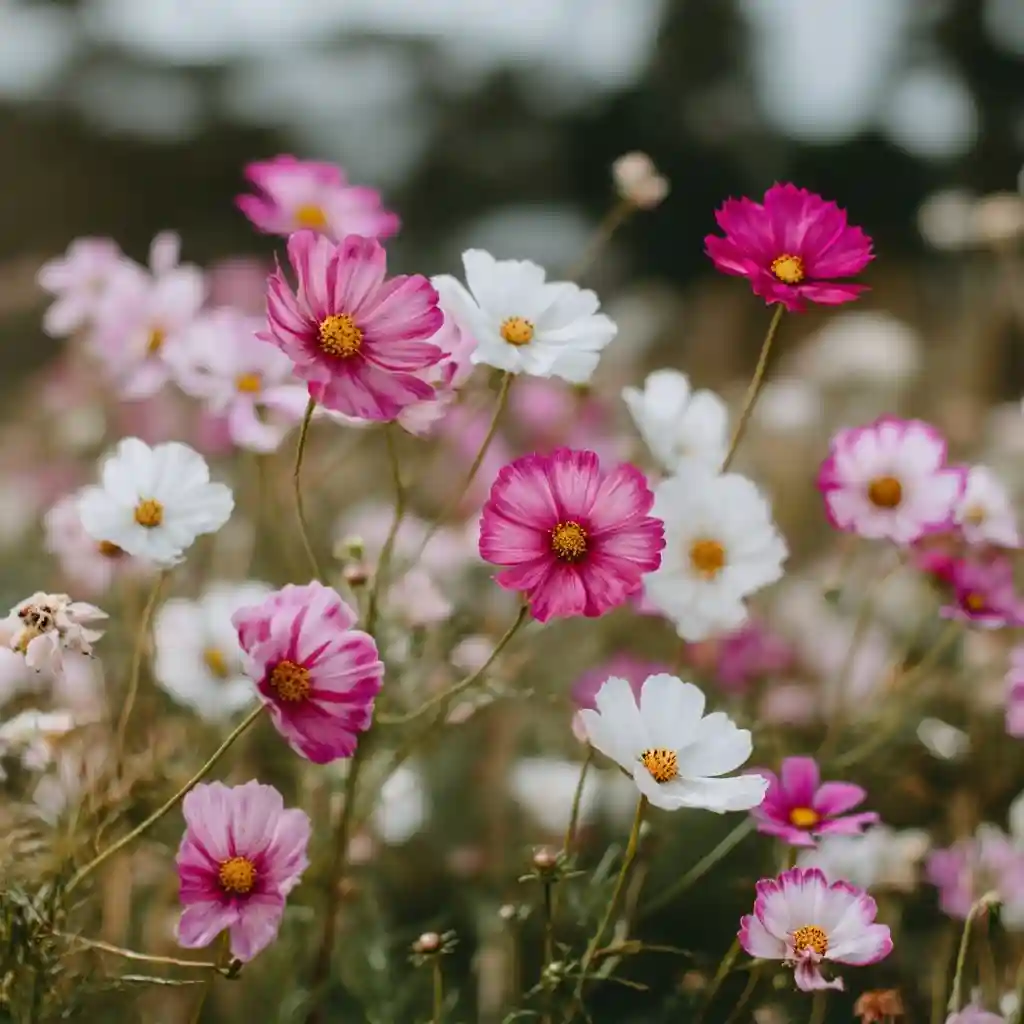
The elegant cosmos flower, native to Mexico, is another beloved October birth flower, symbolizing balance, harmony, and peacefulness. Its name comes from the Greek word kosmos, meaning order or universe—apt for a bloom with perfectly arranged petals.
There are two main species cultivated for ornamental use:
- Cosmos bipinnatus: Often seen in soft pinks, purples, and whites with a yellow center
- Cosmos sulphureus: Rich in orange, yellow, and red, often used to repel mosquitoes in tropical gardens
Cosmos flowers are easy to grow and attract pollinators, making them a garden favorite. Their long stems and airy foliage add lightness to landscapes and bouquets.
In Victorian floral language, cosmos represented modest beauty and contentment. Giving someone a cosmos bouquet signifies love that’s calm, grounded, and enduring.
For those born in October, cosmos reflects a peaceful, reflective personality—someone who finds beauty in simplicity and meaning in every season.
🍂 November Birth Flower
🌼 Chrysanthemum
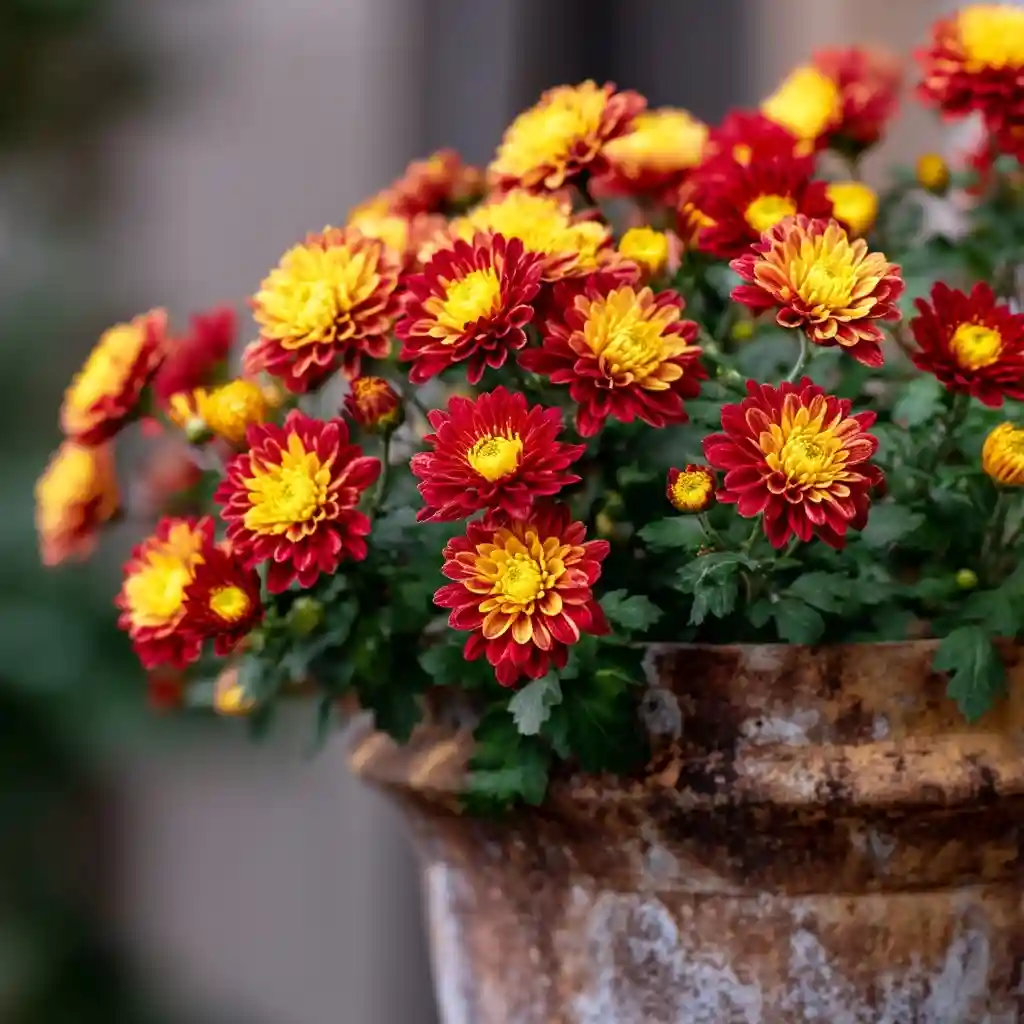
The regal chrysanthemum, often simply called a “mum,” is the classic birth flower for November, symbolizing loyalty, joy, and longevity. With their lush blooms and wide variety of colors and forms, chrysanthemums are one of the most popular ornamental flowers worldwide.
Belonging to the Asteraceae family, chrysanthemums originated in China over 2,500 years ago and were later embraced in Japan, where they became symbols of the emperor and are still featured on the imperial seal.
There are many types of chrysanthemums:
- Pompons: Small, round, and button-like
- Spider Mums: Long, curled petals resembling legs
- Single Mums: Daisy-like blooms with visible centers
- Anemone Mums: Raised centers with rounded inner petals
Color meanings include:
- Red: Love and deep passion
- White: Truth and purity
- Yellow: Cheerfulness and friendship
In some cultures, chrysanthemums are associated with funerals and remembrance, especially in Europe. But in others, like the U.S. and Asia, they are symbols of celebration, positivity, and enduring beauty.
For November-born individuals, the chrysanthemum reflects a warm, loyal spirit and a joyful approach to life, even as the seasons turn cold.
🌸 Peony

While more traditionally tied to spring, the peony is also considered a birth flower for November in American tradition, thanks to its lush appearance and meaningful symbolism. Representing honor, prosperity, and bashfulness, peonies have captivated hearts for centuries.
Native to China, where they’re known as the “King of Flowers,” peonies were once prized for both their beauty and medicinal properties. They’ve also held a strong place in Greek mythology, named after Paeon, a student of Asclepius, the god of medicine.
Peonies fall into three types:
- Herbaceous: Die back in winter and regrow in spring
- Tree Peonies: Woody shrubs with large, bold blooms
- Intersectional (Itoh): Crossbreeds combining the best traits of both
These luxurious flowers can last up to a week when cut, making them a favorite in bridal bouquets and special arrangements. Peonies are also said to ward off evil spirits and are often planted near homes for good luck.
For November birthdays, the peony conveys grace, generosity, and the quiet strength of emotional depth.
🎄 December Birth Flower
🌺 Poinsettia
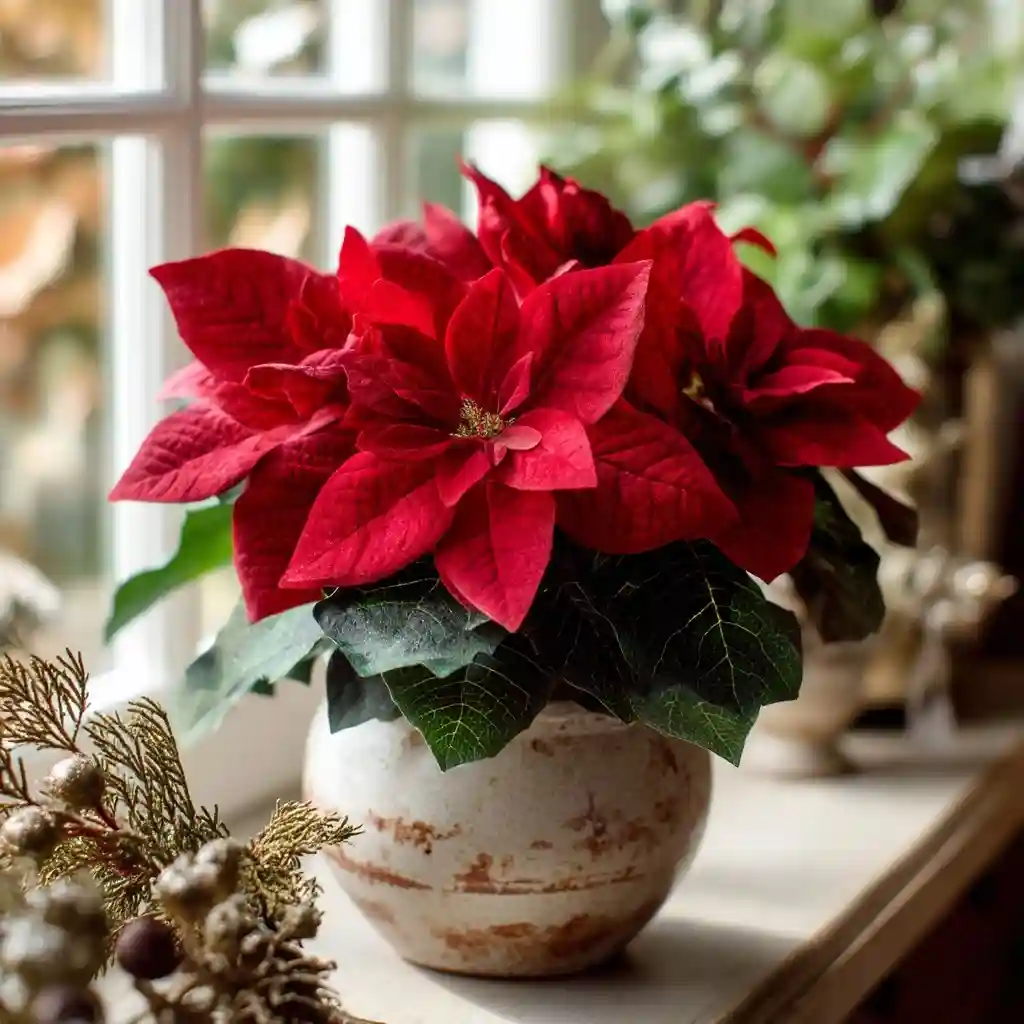
Bright and festive, the poinsettia (Euphorbia pulcherrima) is the most iconic birth flower for December, symbolizing celebration, success, and good cheer. Native to Mexico and introduced to the U.S. by Joel Poinsett in the 19th century, it’s now a staple of winter décor and holiday spirit.
What many think are flower petals are actually bracts—modified leaves that turn vibrant red, pink, or white in response to shorter daylight hours. True flowers are the small yellow buds at the center.
Key facts:
- Poinsettias are short-day plants, requiring minimal light to change color
- Named after botanist Joel Poinsett, U.S. ambassador to Mexico
- Widely used to celebrate Christmas, representing the Star of Bethlehem
In Christian tradition, the red color symbolizes the blood of Christ, while the star shape of the bracts represents guidance and renewal. In modern use, poinsettias are seen as a floral symbol of joyful endings and hopeful beginnings.
For those born in December, poinsettias bring a message of vibrancy, generosity, and seasonal warmth.
🌿 Holly
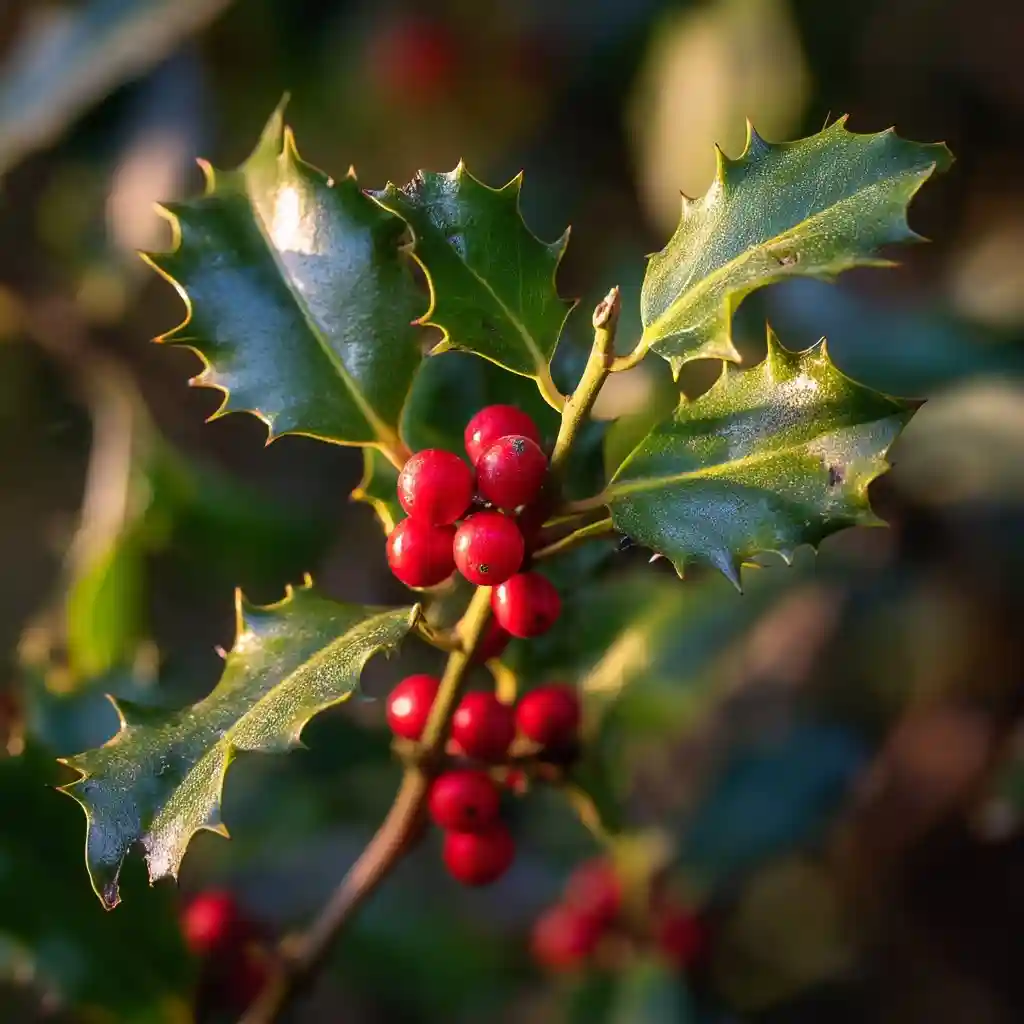
Another December flower with strong symbolic meaning is holly (Ilex aquifolium), representing resilience, protection, and eternal life. Recognized for its glossy green leaves and bright red berries, holly is closely associated with winter, especially in Christian and Celtic traditions.
Important traits:
- Evergreen, remaining vibrant through the harshest winters
- Berries only appear on female plants, requiring both male and female for fruiting
- Used for holiday décor as wreaths, garlands, and centerpieces
Holly has long been a symbol of protection, believed to guard homes from evil spirits. In ancient Roman Saturnalia celebrations, it was gifted for good luck. Later, it was adopted by Christians to symbolize Christ’s crown of thorns and red blood.
For December-born individuals, holly signifies strength during adversity, steadfast loyalty, and a spirit that thrives through life’s seasons.
🌼 Narcissus (Paperwhite)
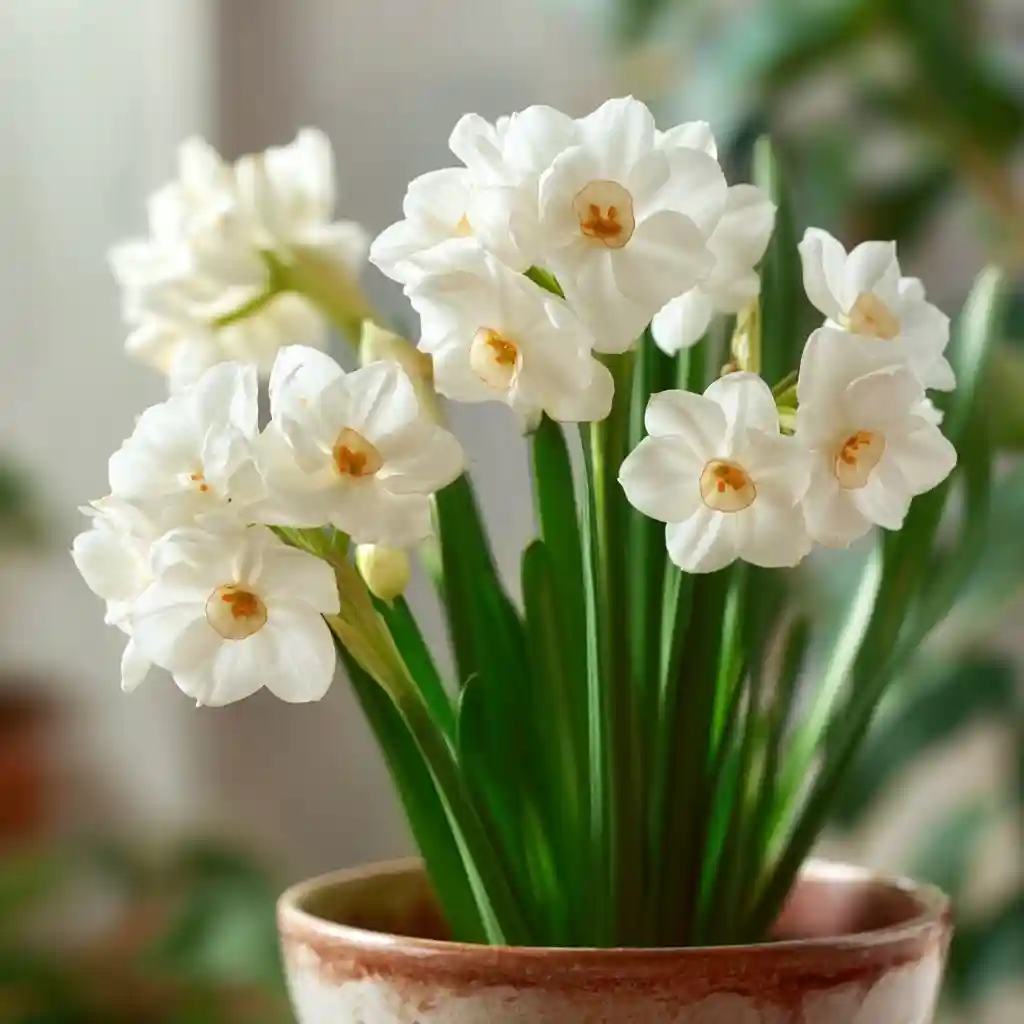
The paperwhite narcissus (Narcissus papyraceus) rounds out the birth flowers of December, representing faithfulness, renewal, and inner clarity. This delicate white bloom is a winter-blooming variety of the daffodil family, often grown indoors to brighten gloomy days.
These fragrant flowers grow easily from bulbs without soil, making them perfect for holiday gifts and indoor arrangements. Despite their fragility, they carry strong symbolic weight:
- In Greek mythology, the narcissus is tied to the story of self-reflection and transformation
- In Eastern cultures, it’s associated with good fortune and wealth, especially around the New Year
Paperwhites are commonly forced to bloom during winter, bringing light, fragrance, and elegance into the darkest time of year. For December birthdays, they offer a message of purity, hope, and reflective wisdom.
❓ FAQs About Birth Flowers
Why are there two or more birth flowers for each month?
Each month typically has more than one birth flower due to the influence of different cultural traditions, regional variations, and seasonal bloom availability. For example, the English and American floral traditions often assign different flowers to the same month. Having multiple flowers provides flexibility in personal meaning and gifting.
How can I identify my birth flower?
You can identify your birth flower by your birth month. Simply match your month with the flower(s) assigned to it in this guide. If you’re unsure which flower tradition (English or American) resonates more, consider factors like local availability or personal symbolism.
Can I grow my birth flower at home?
Yes—many birth flowers can be grown in home gardens or containers, depending on your climate and space:
- Cool-weather flowers like carnations, violets, or daffodils do well in spring and fall
- Summer bloomers like roses, gladiolus, and poppies love full sun
- Winter-friendly options like poinsettias or paperwhites can thrive indoors
Be sure to research your specific region’s USDA zone and growing conditions.
Are birth flowers used in modern celebrations?
Absolutely. Birth flowers are increasingly used in personalized gifts, such as:
- Birthday bouquets featuring the recipient’s birth flower
- Jewelry and artwork inspired by specific blooms
- Wedding floral arrangements reflecting the couple’s birth months
Including birth flowers adds a thoughtful, symbolic layer to your gifts and decor.
🌸 Conclusion
Birth flowers offer a poetic, meaningful way to connect our lives with the natural world. Whether it’s the purity of a January carnation, the passionate marigold of October, or the celebratory poinsettia of December, each bloom carries its own story, energy, and symbolism.
These flowers don’t just mark time—they reflect the essence of each month, making them perfect for thoughtful gifts, personal symbolism, or simply deepening your connection to the changing seasons.
🌿 Love gardening inspiration? Follow me on Pinterest for bold plant ideas, tips, and seasonal color!
More Posts
